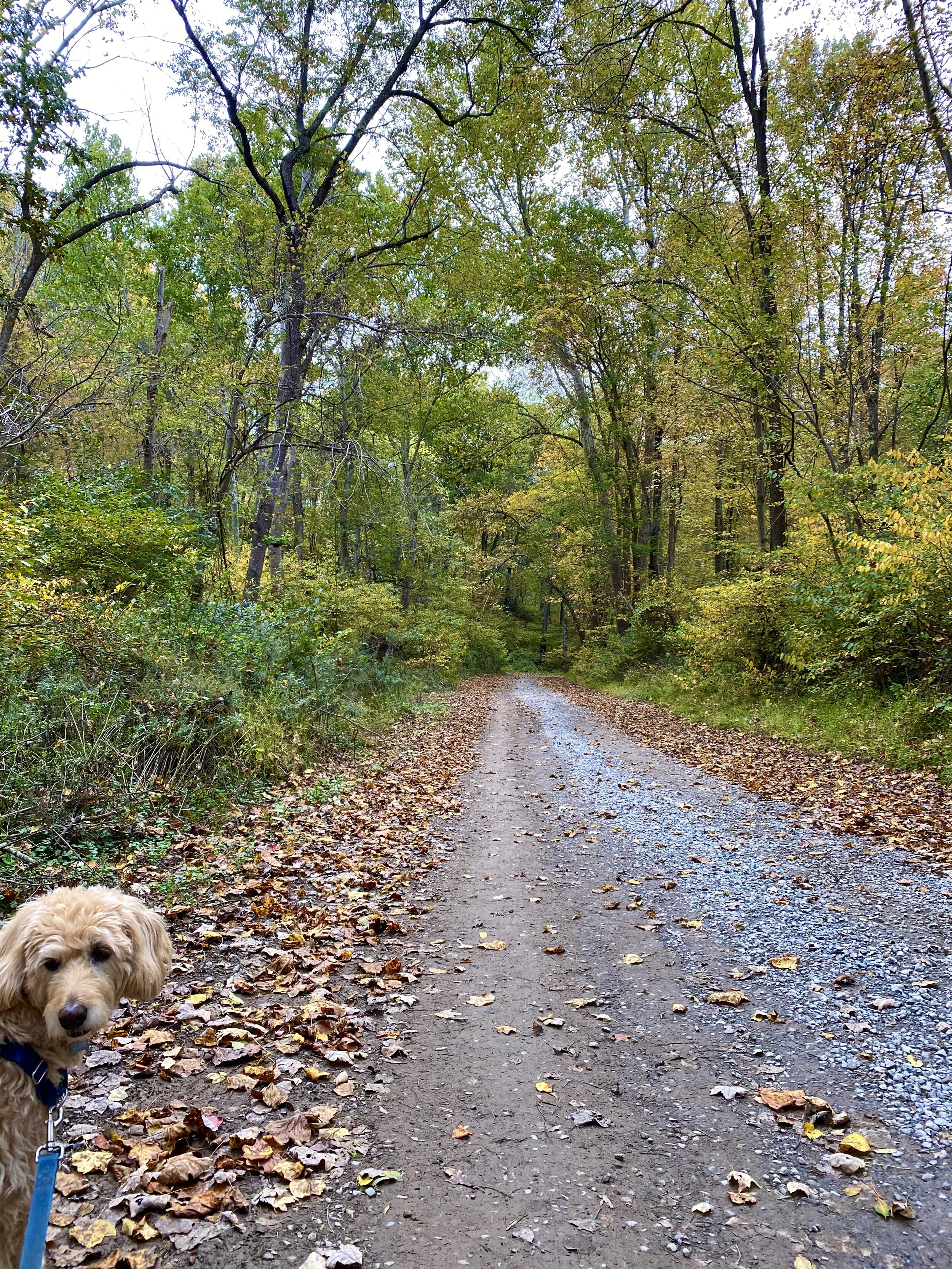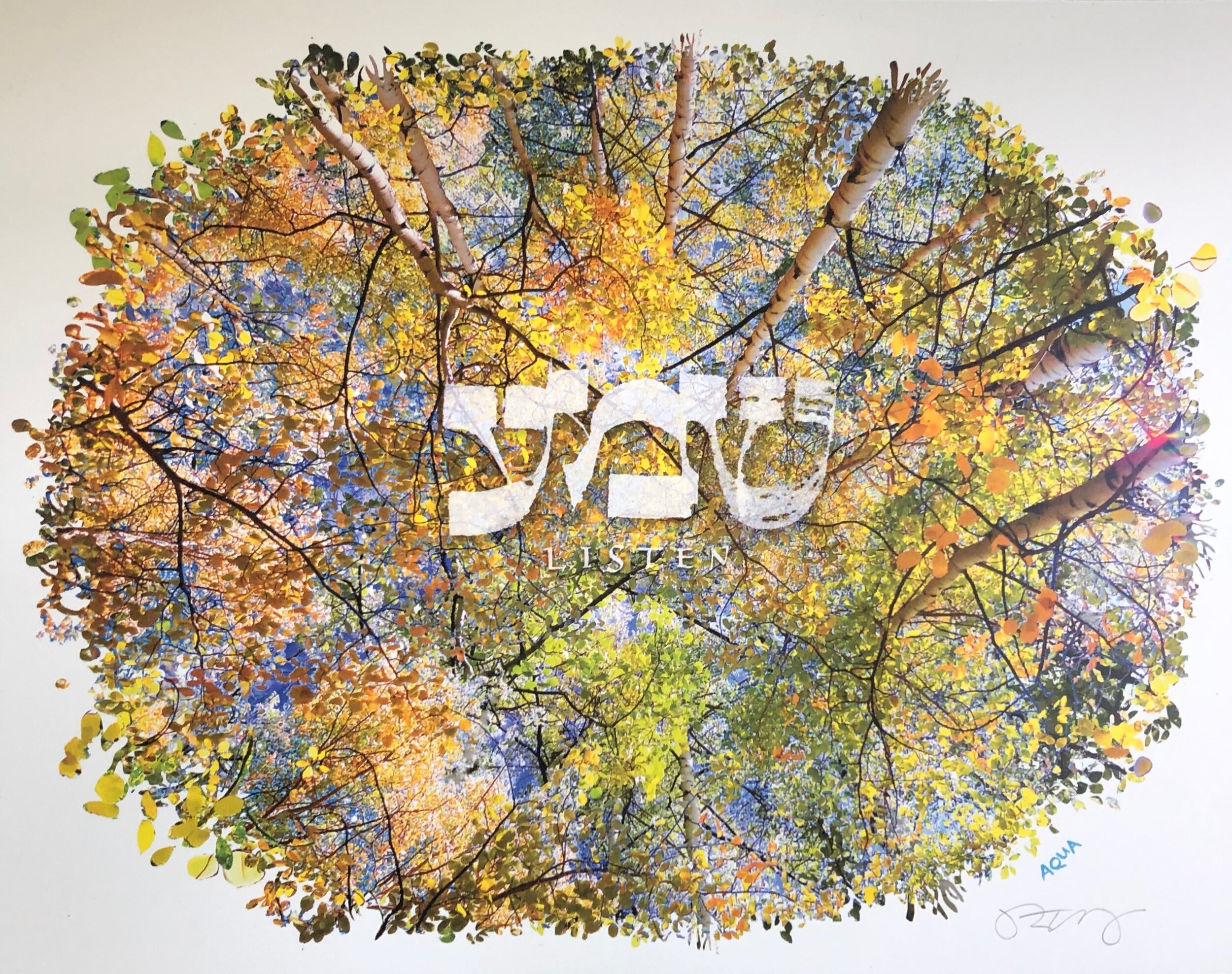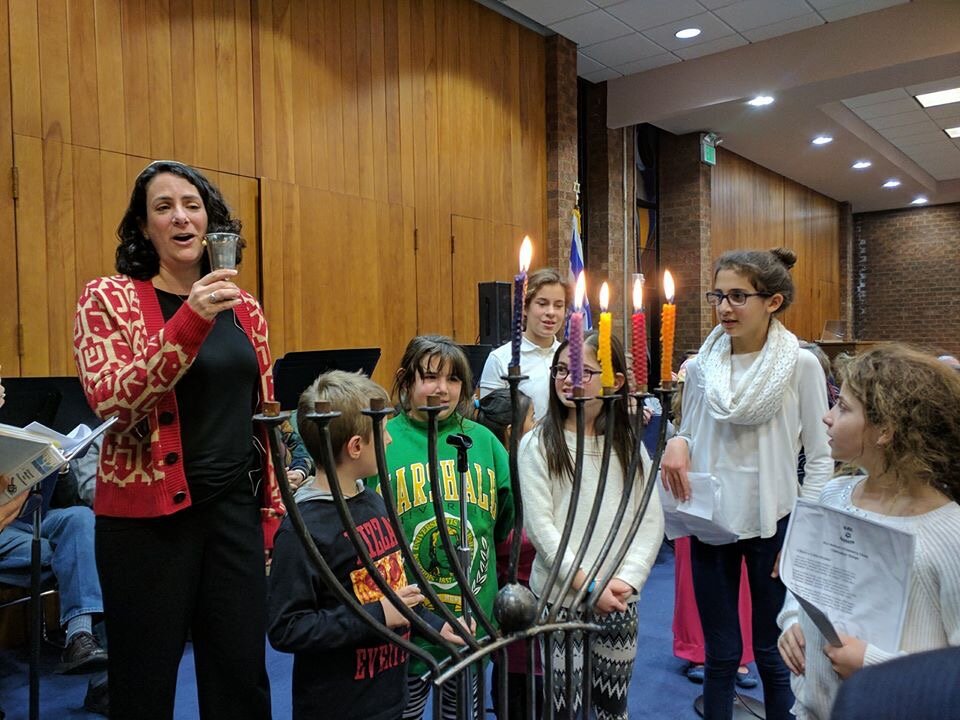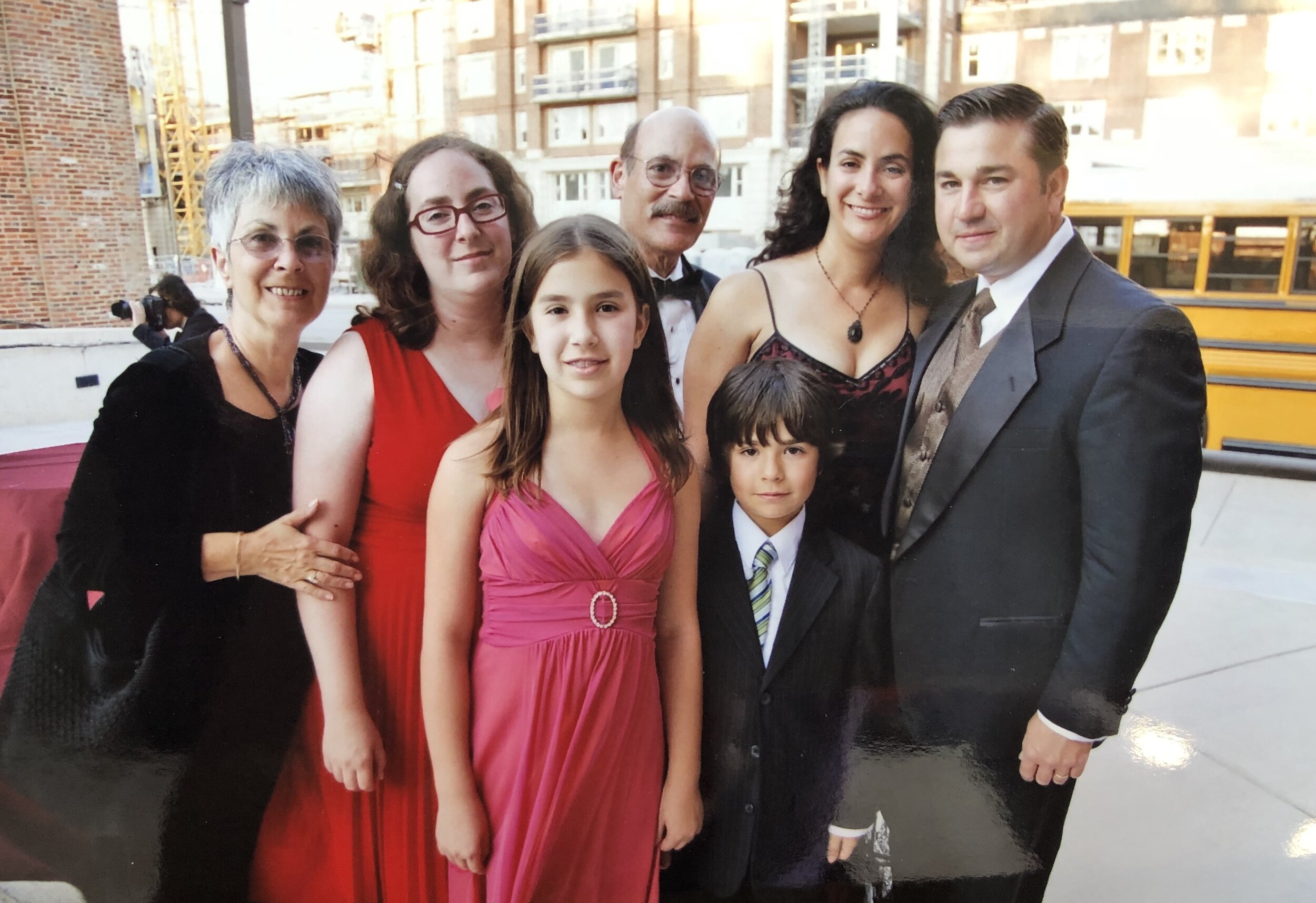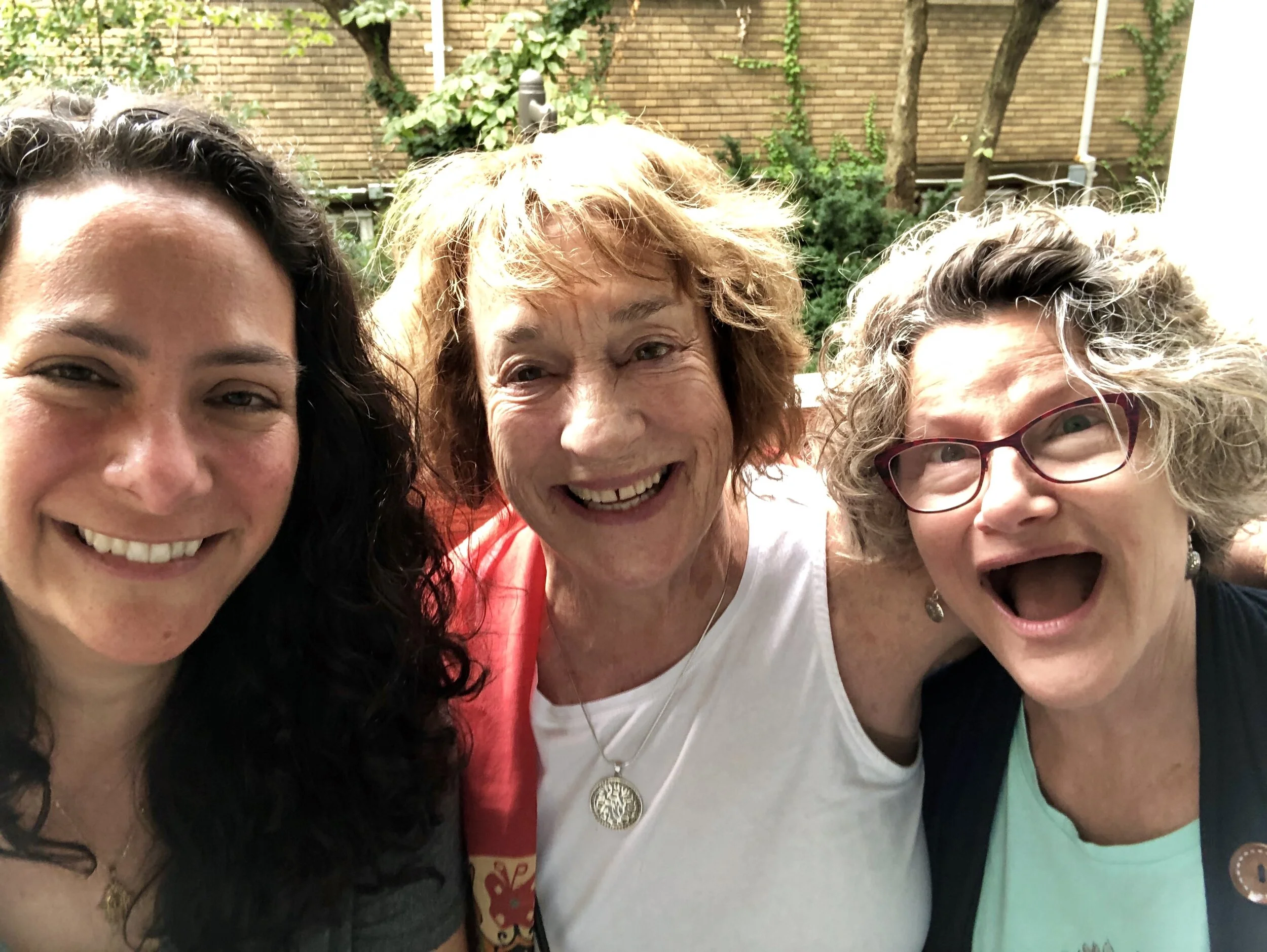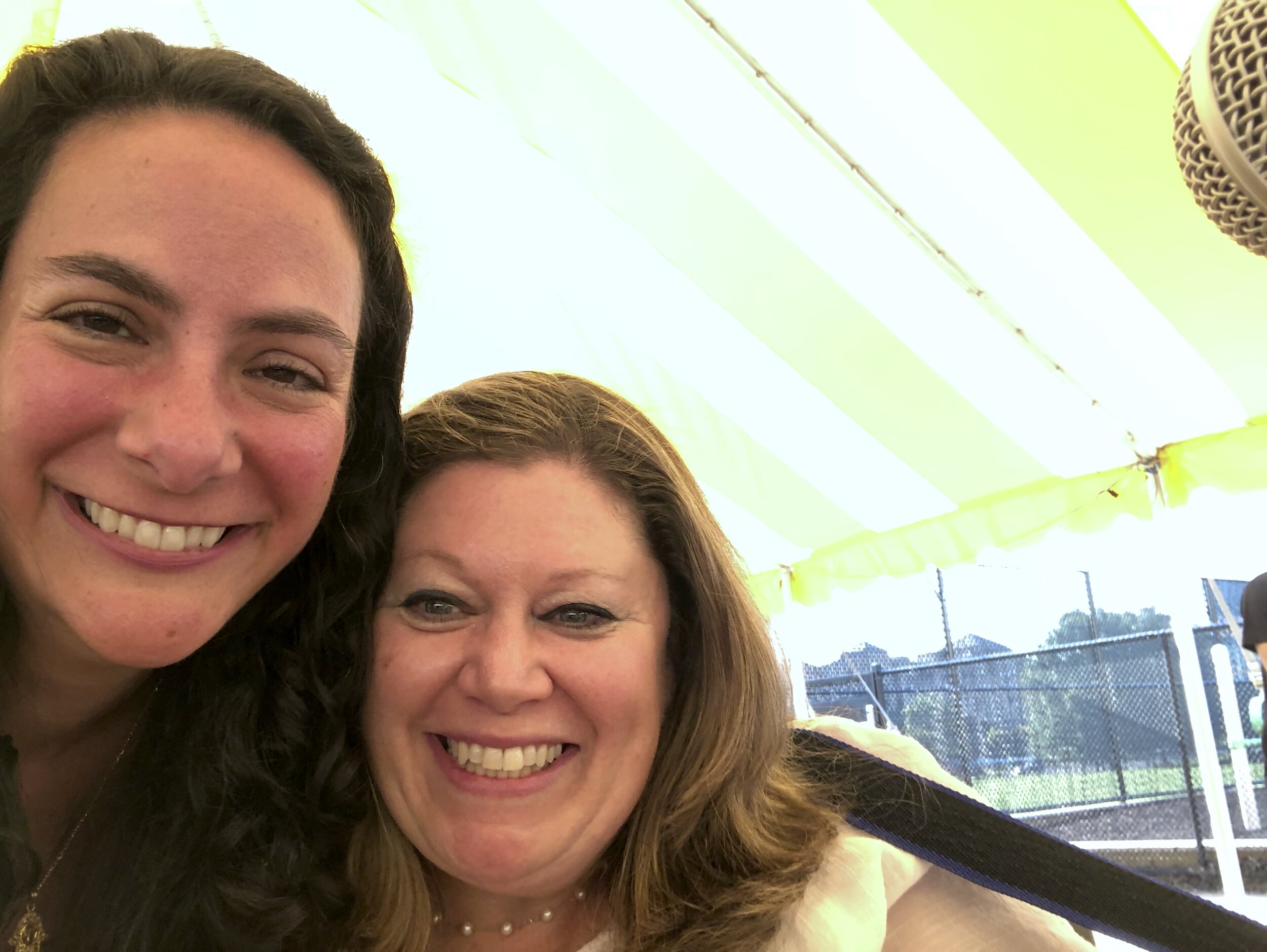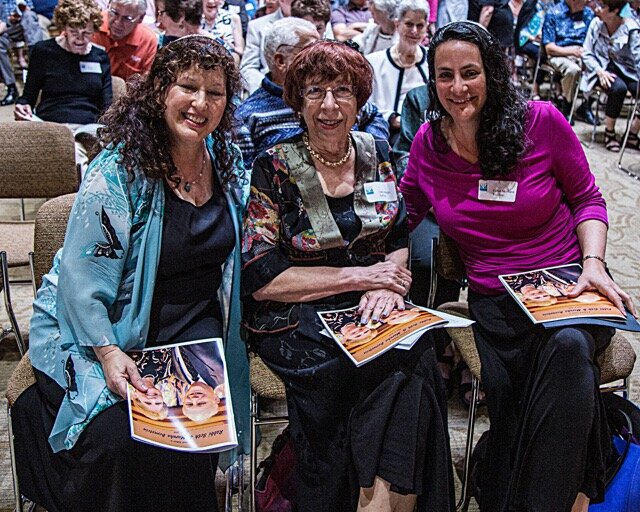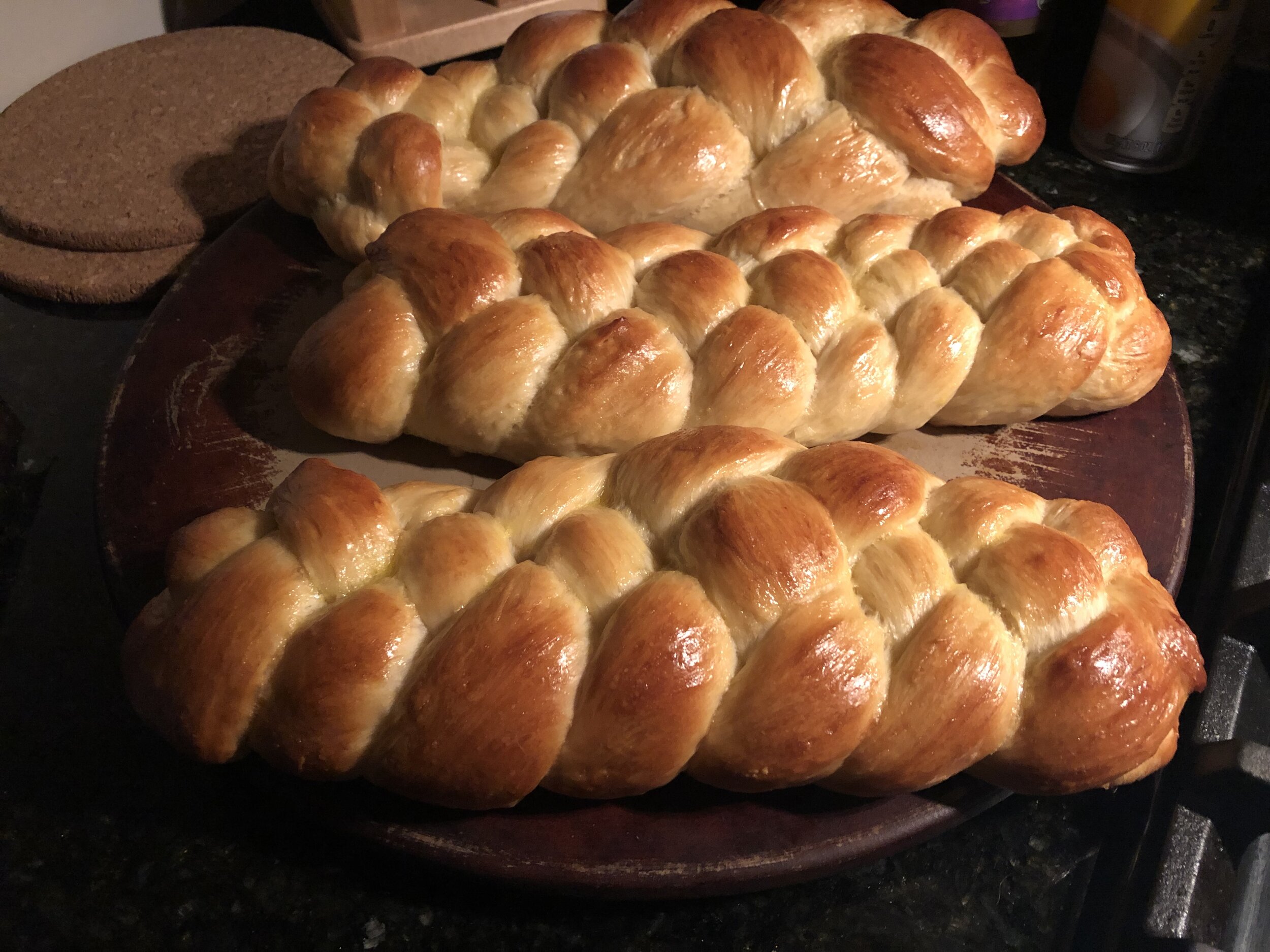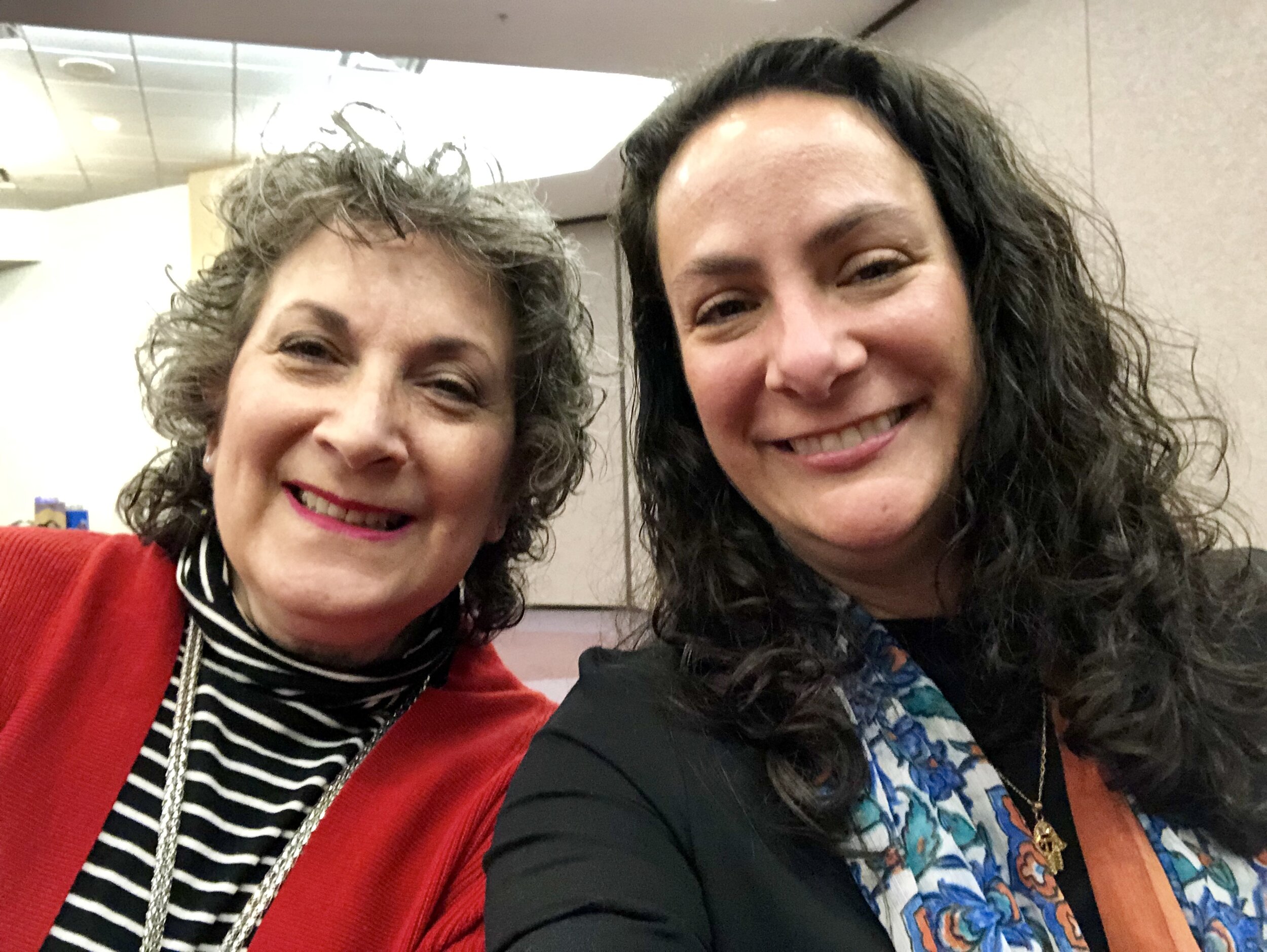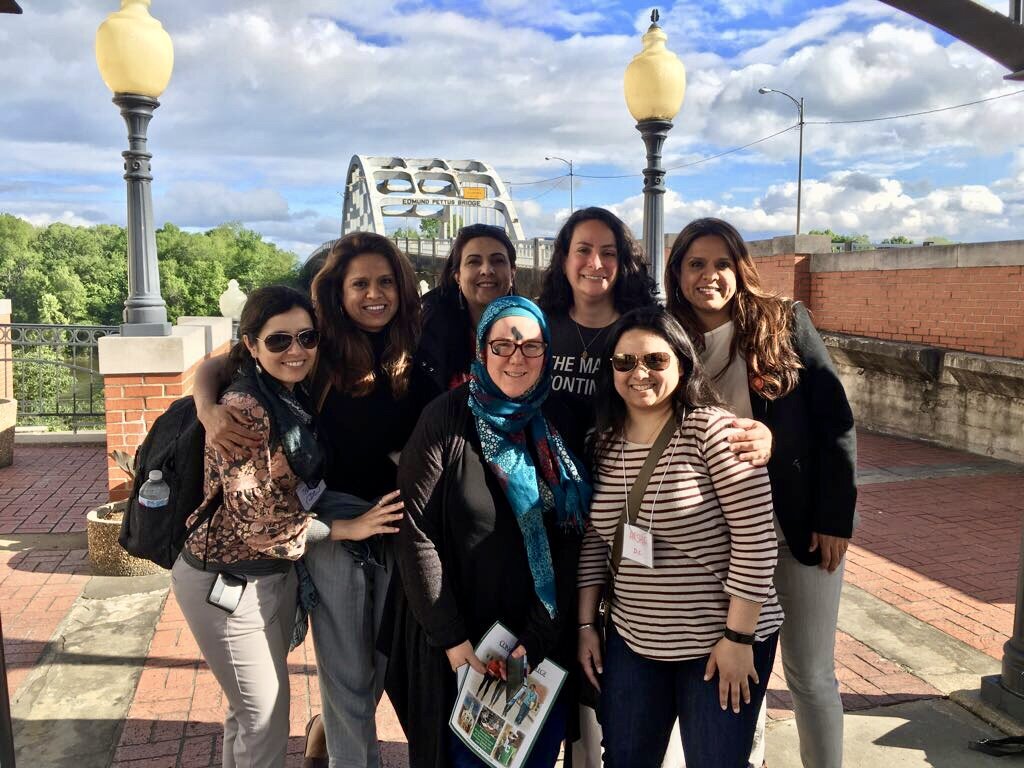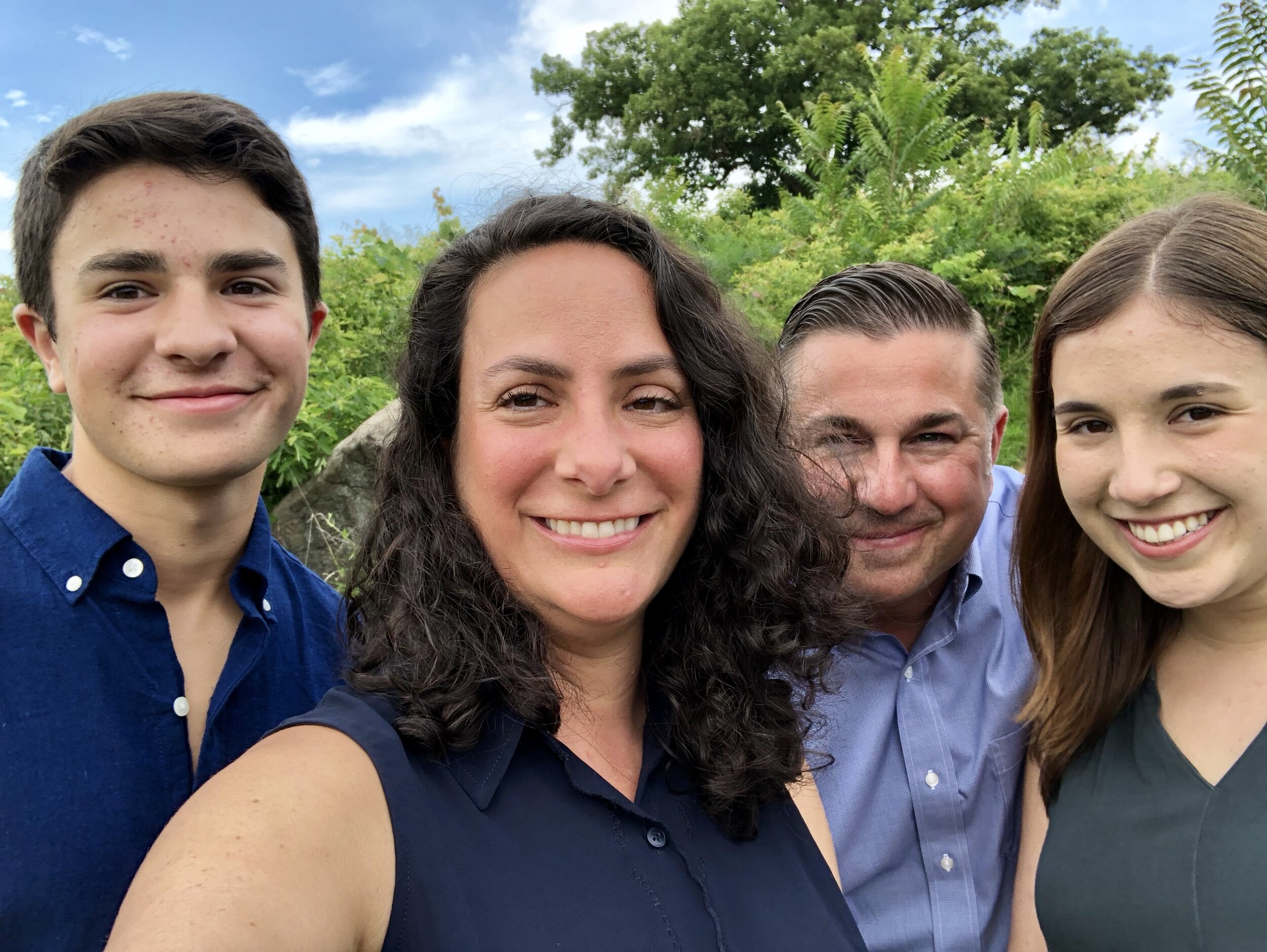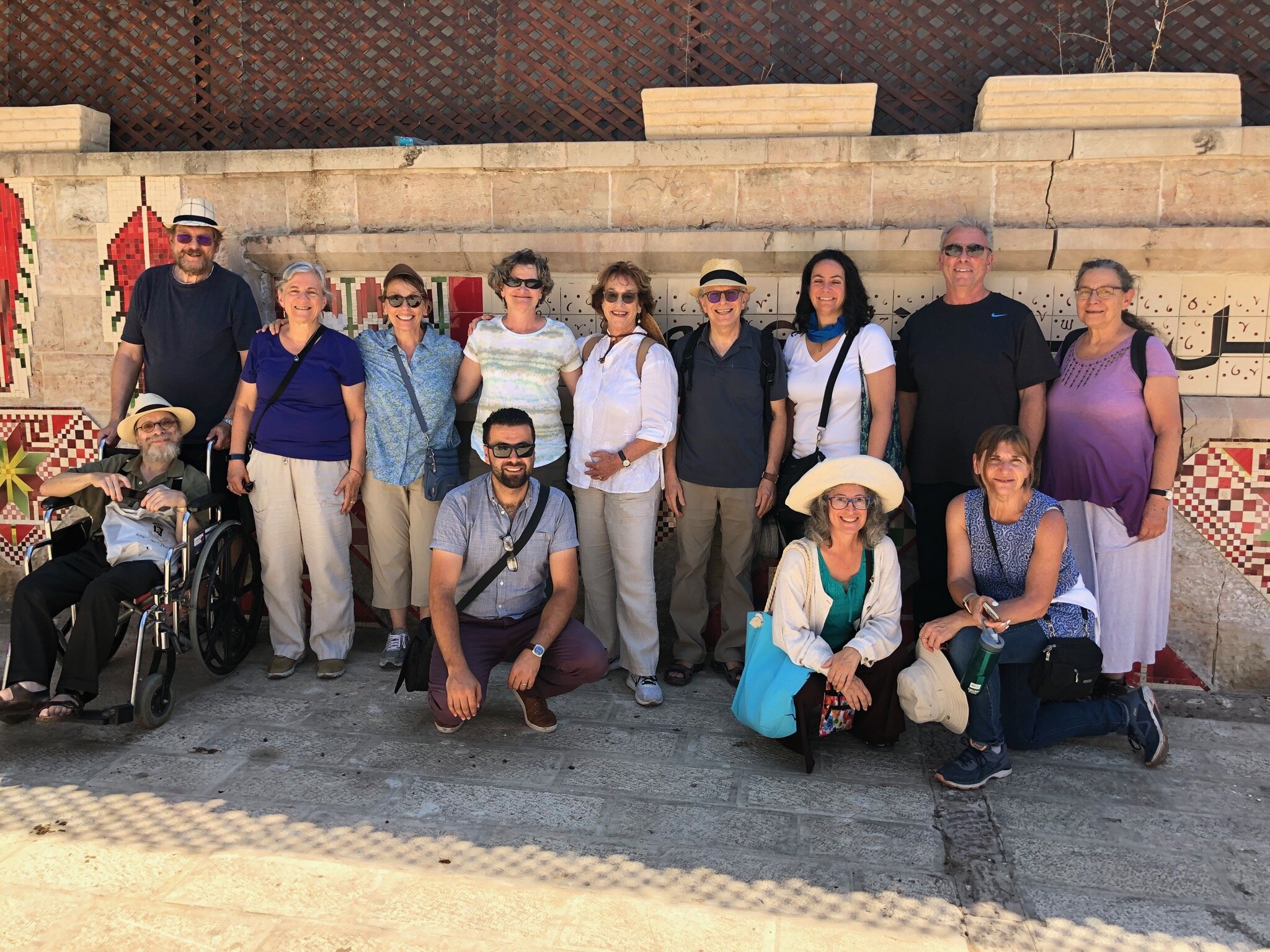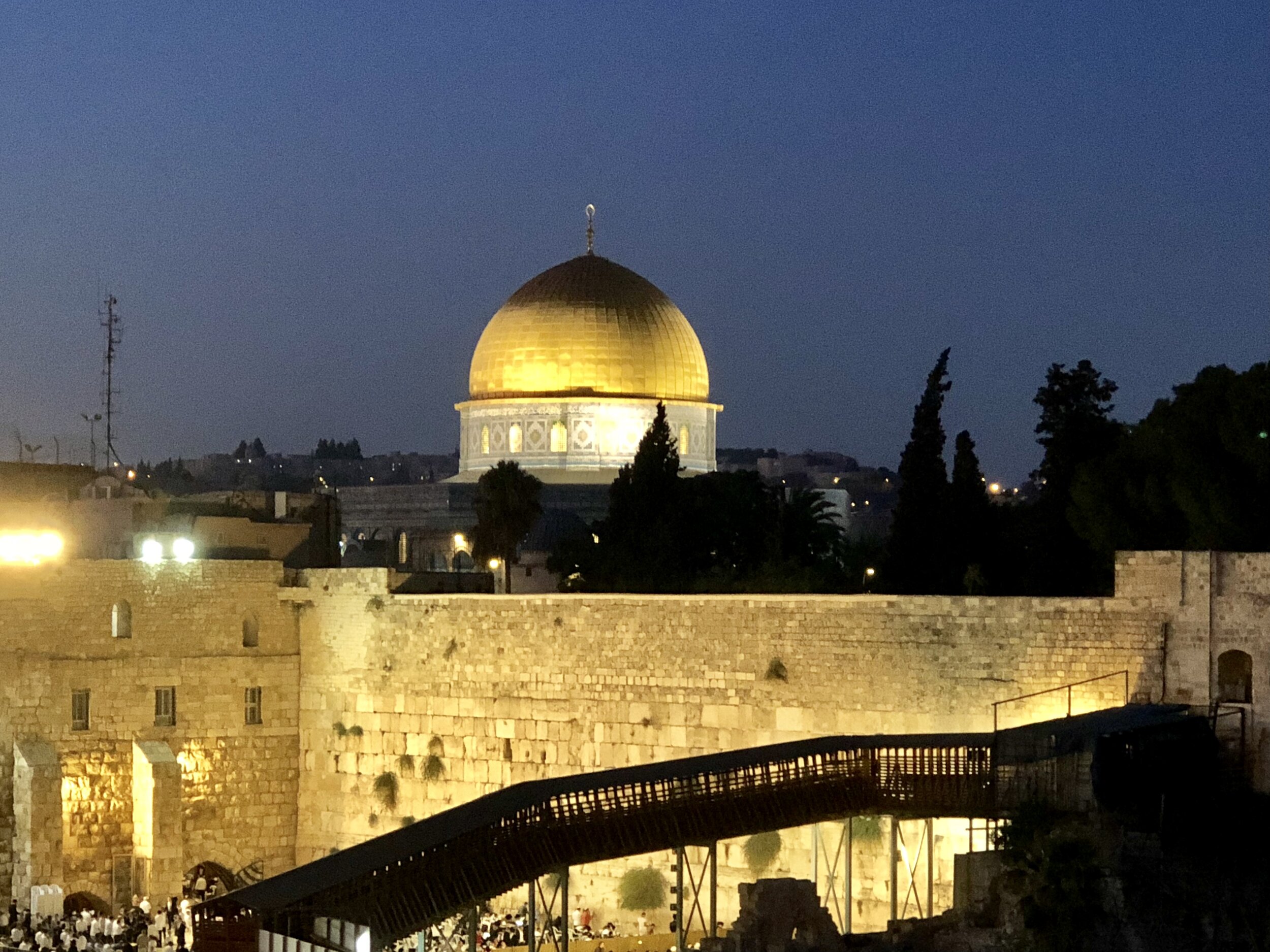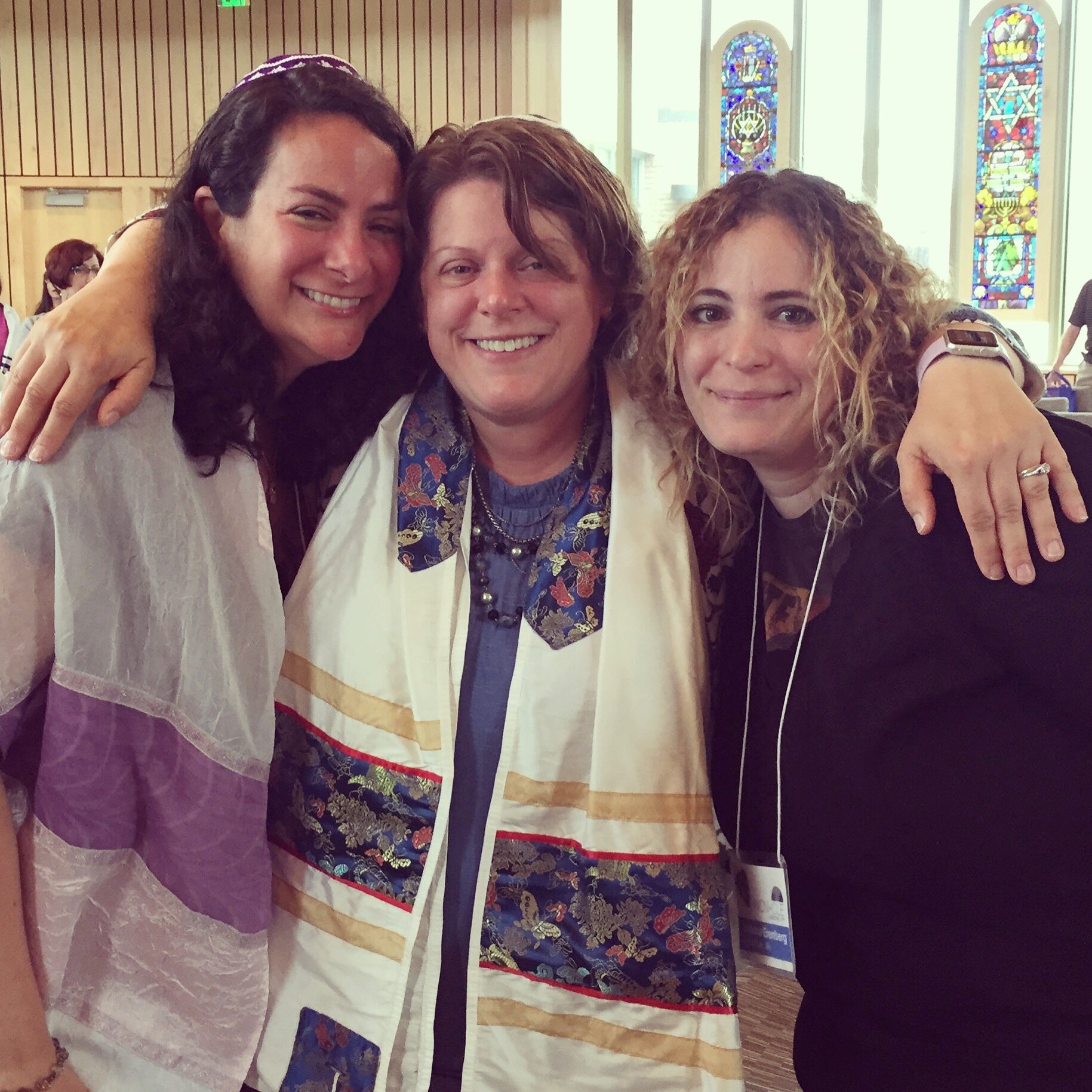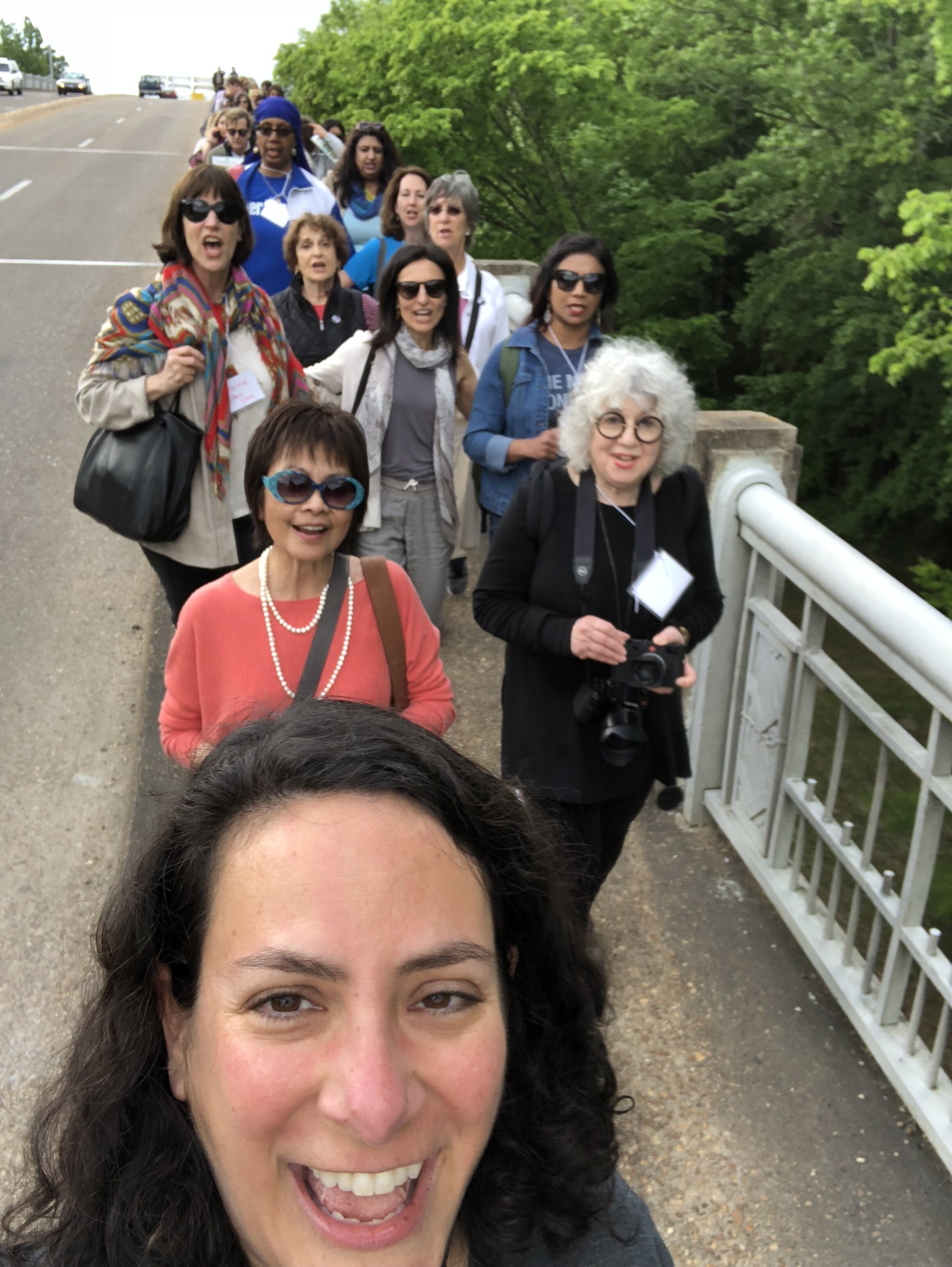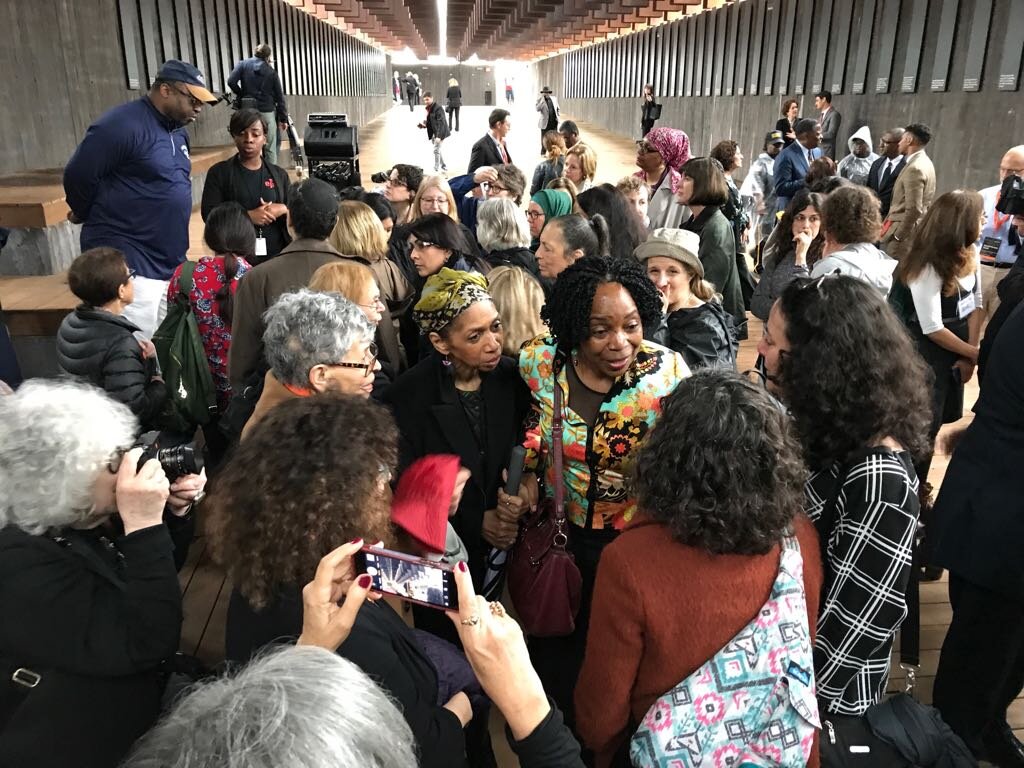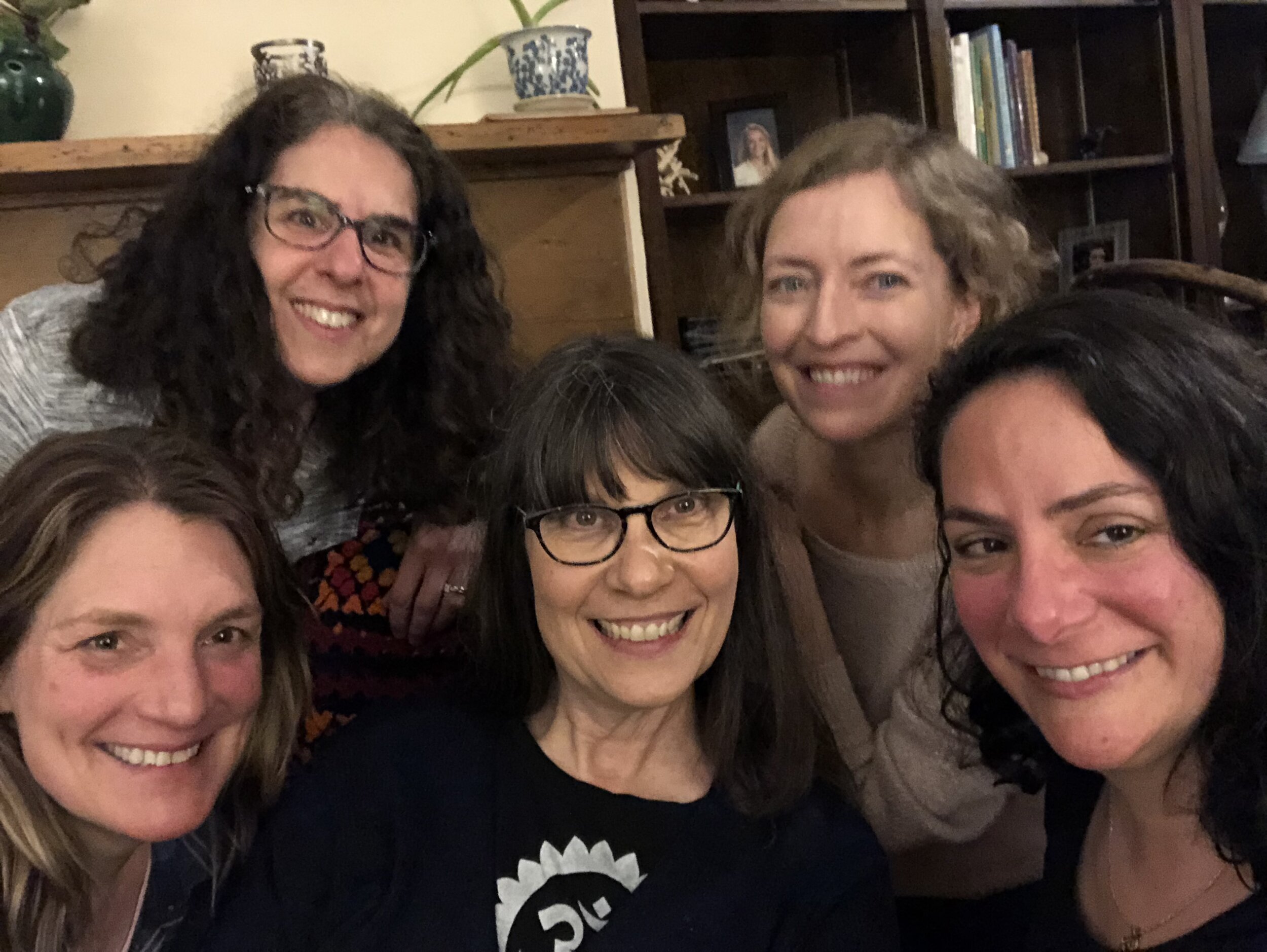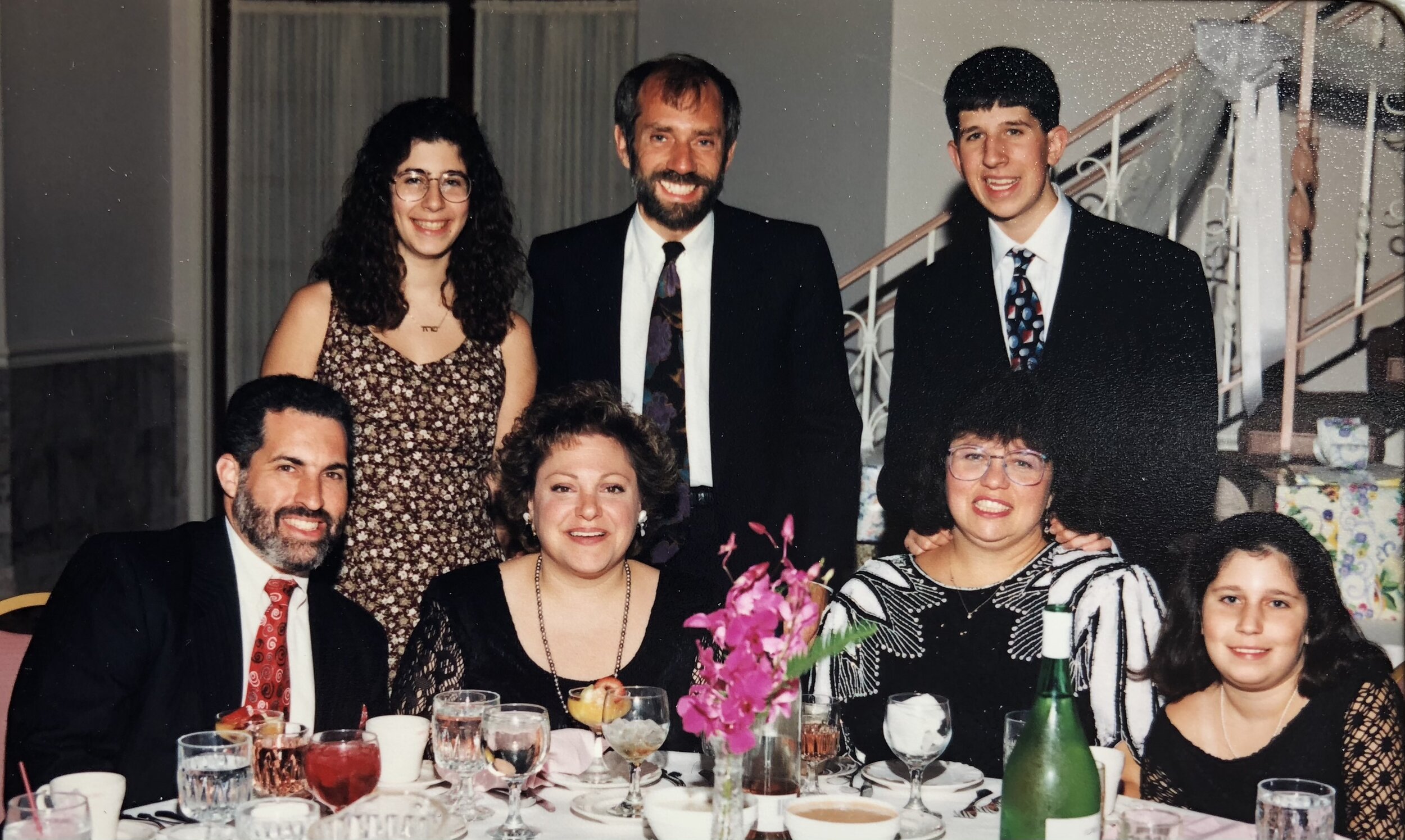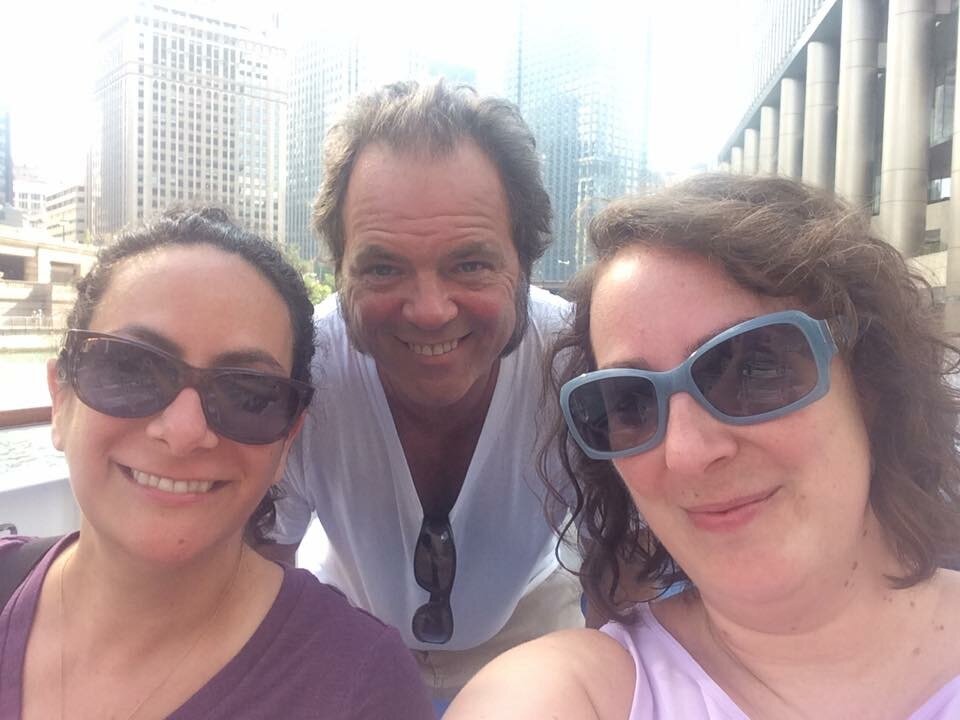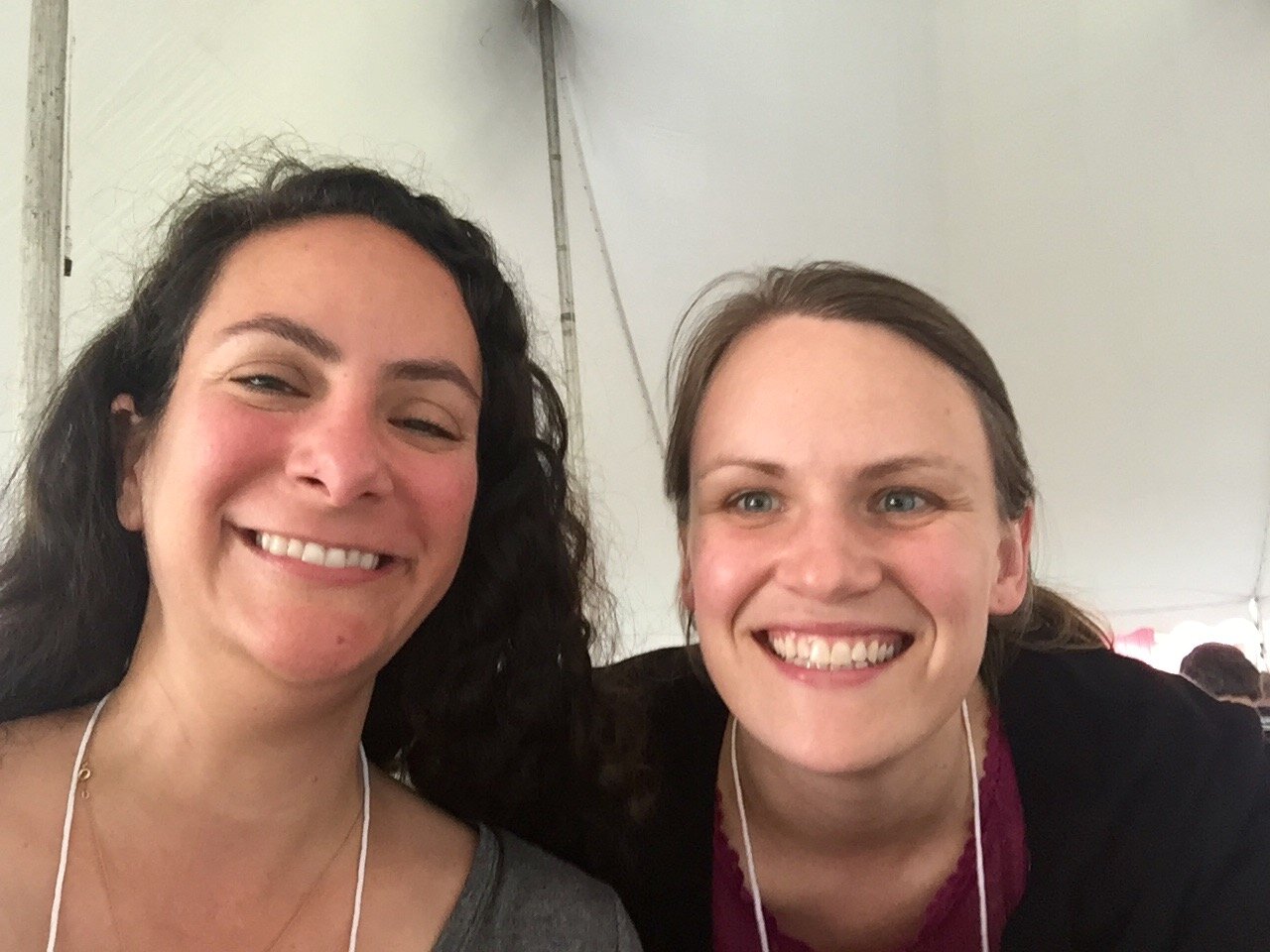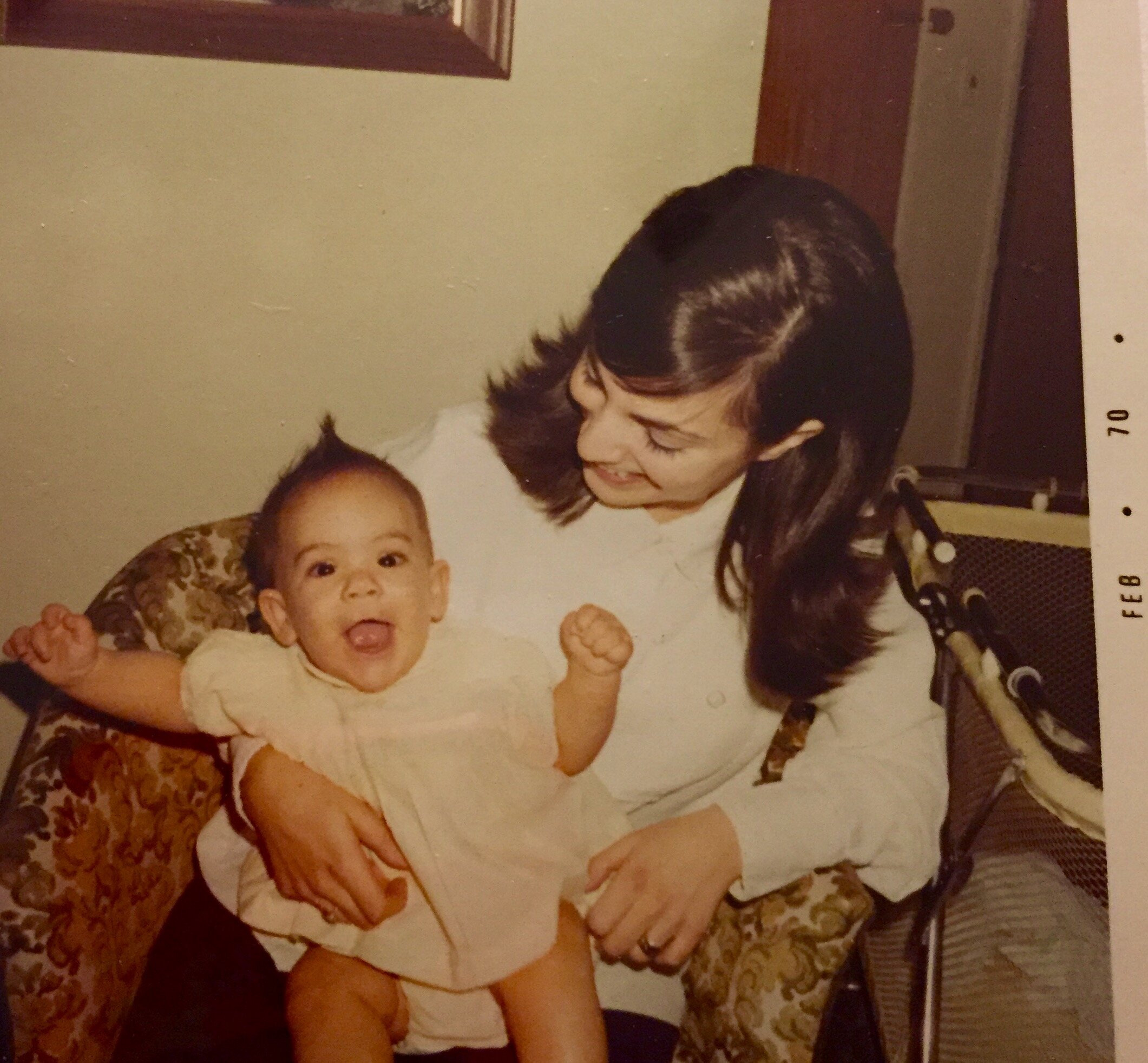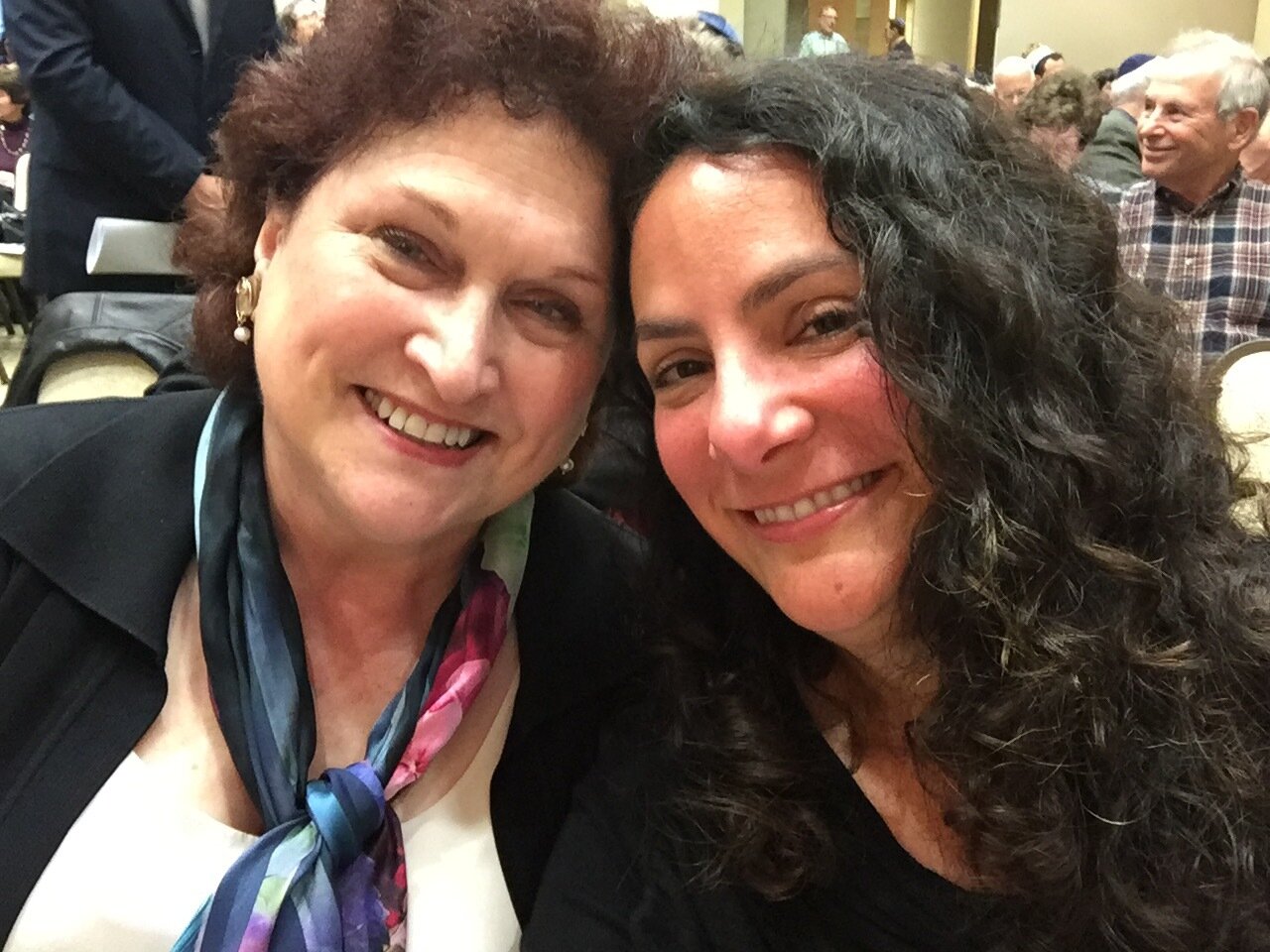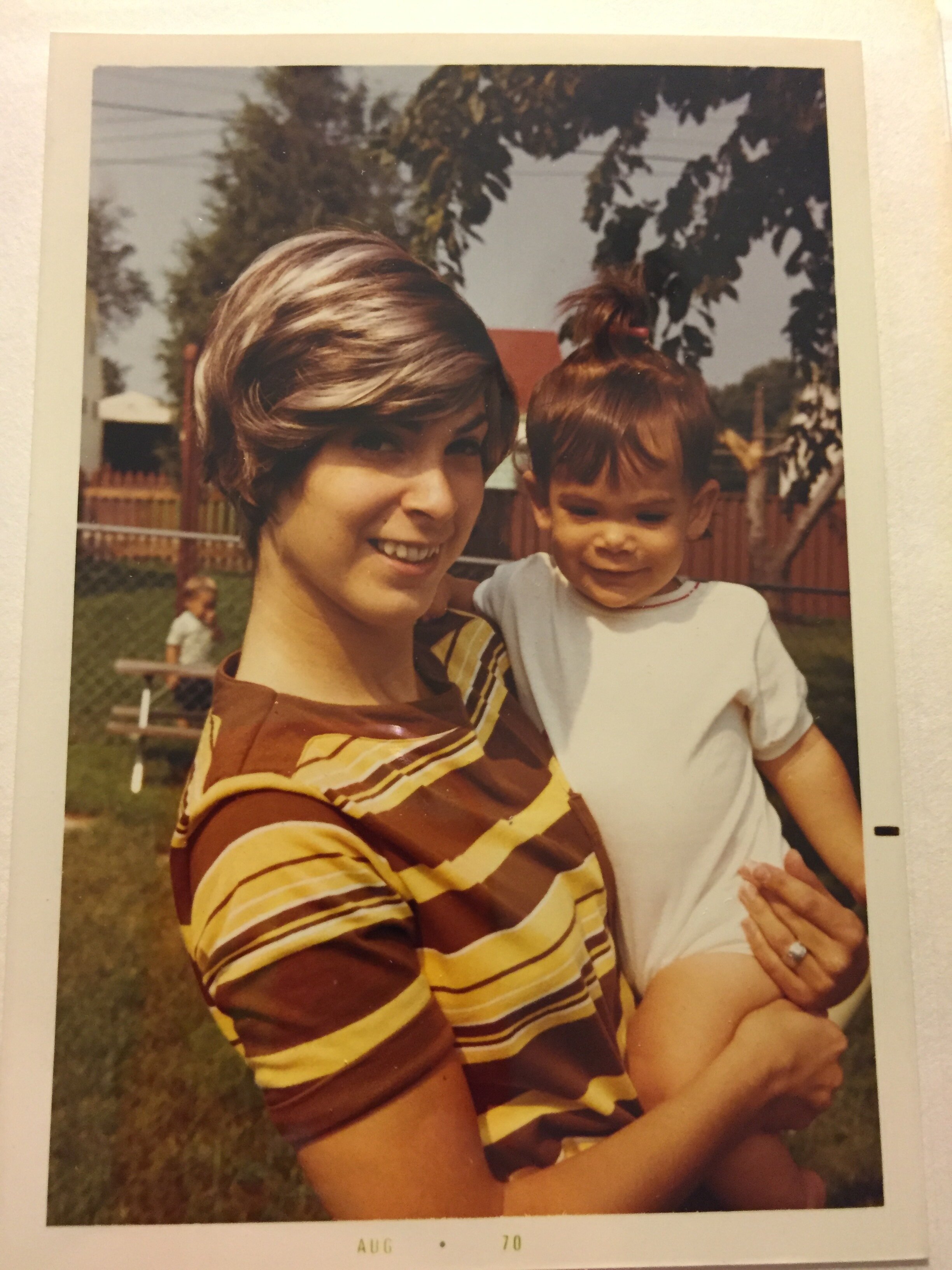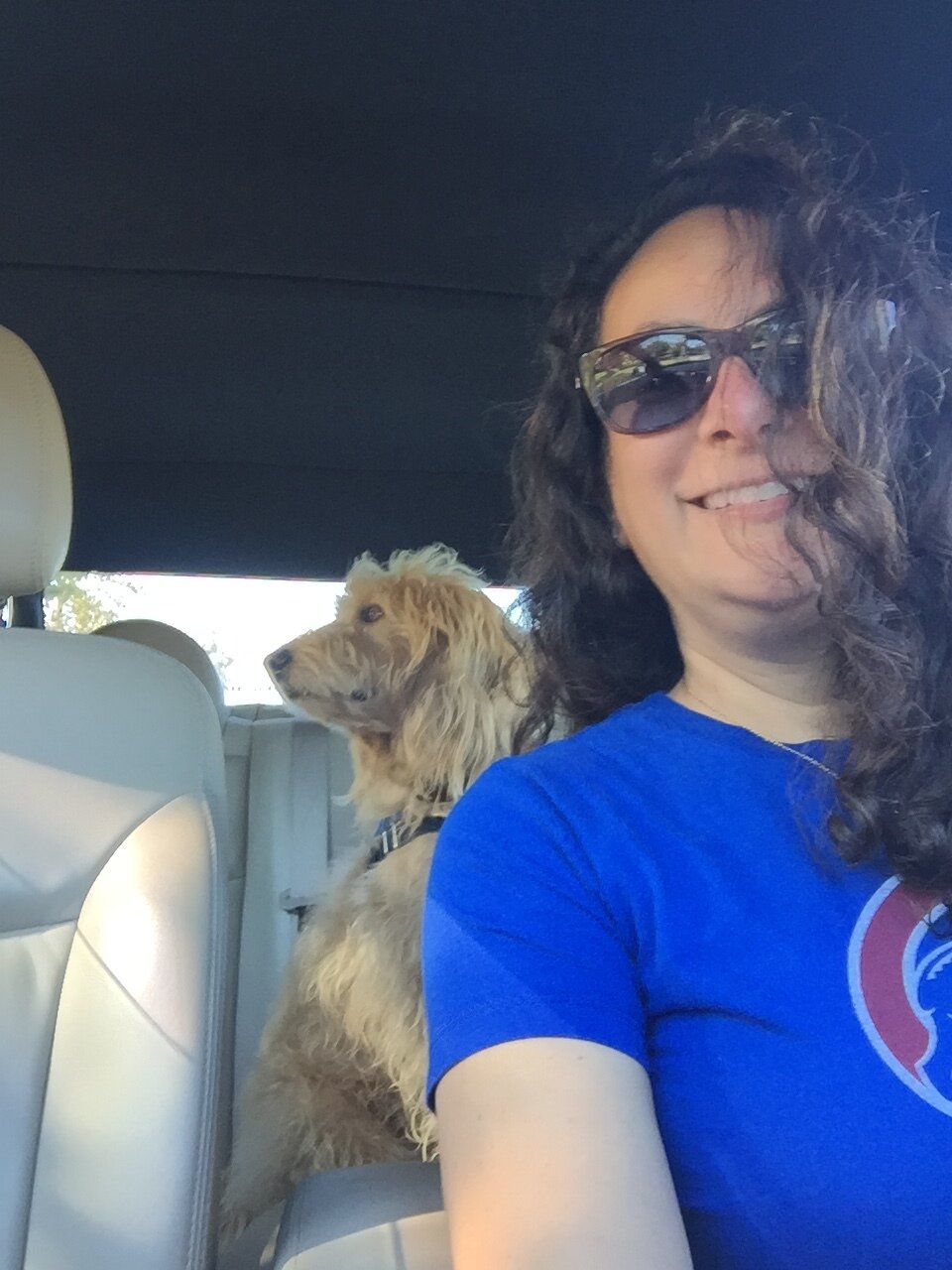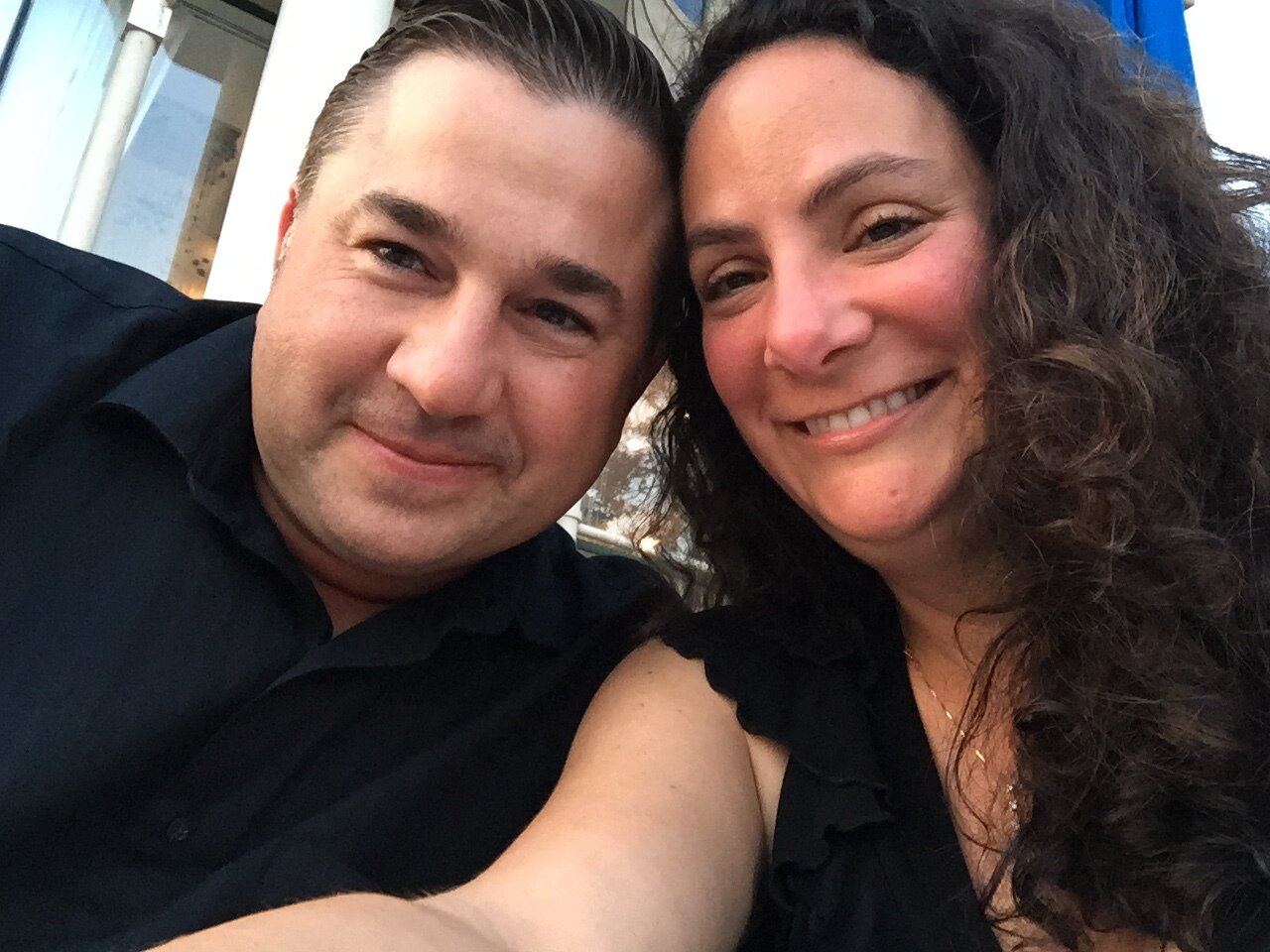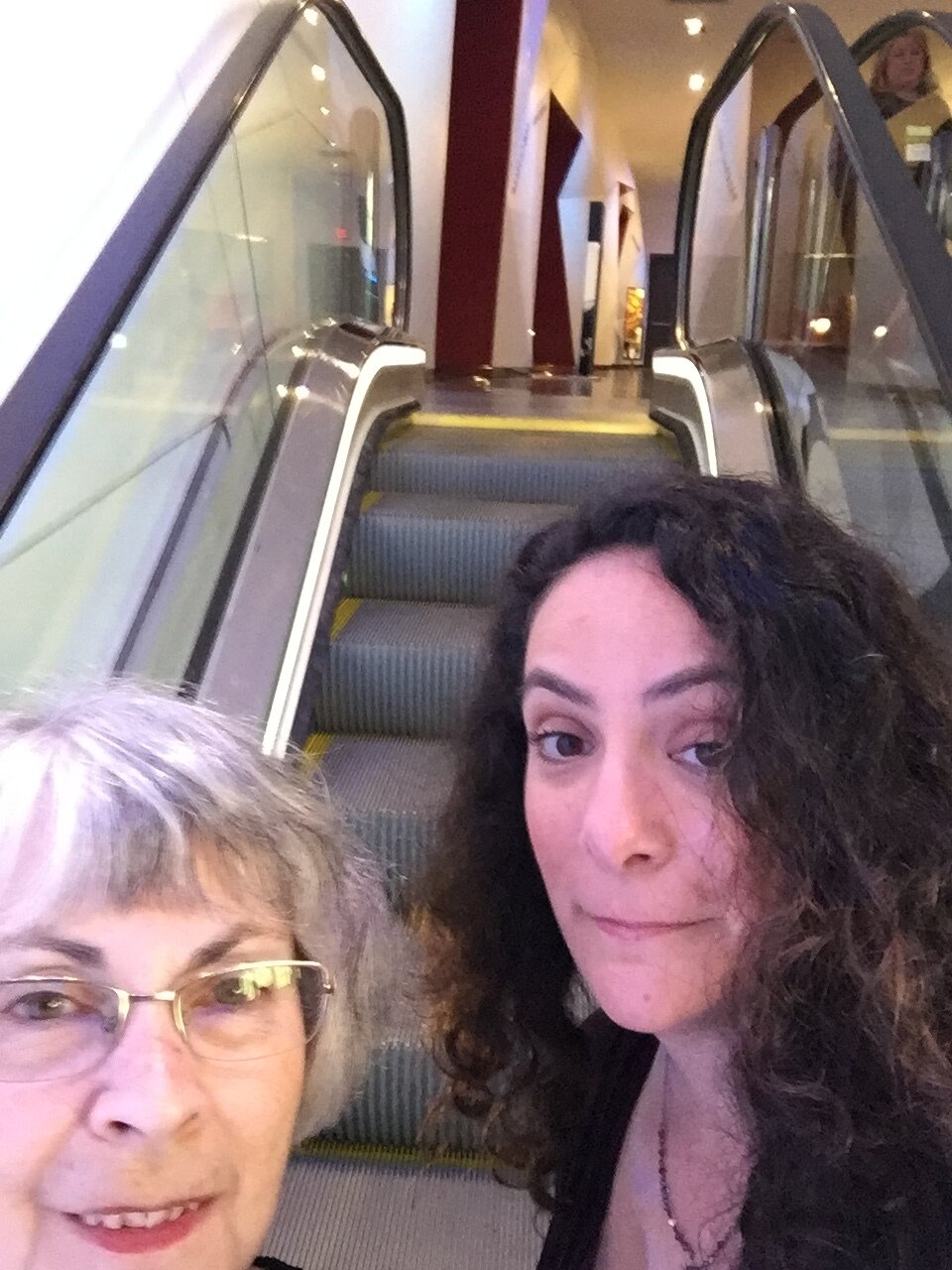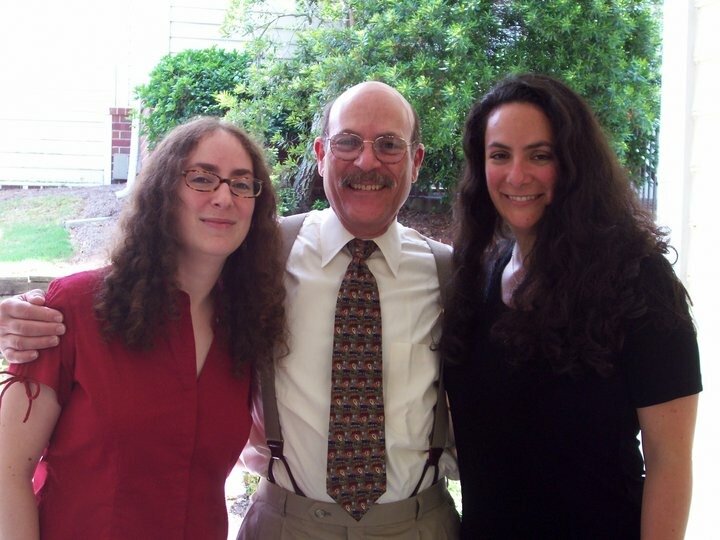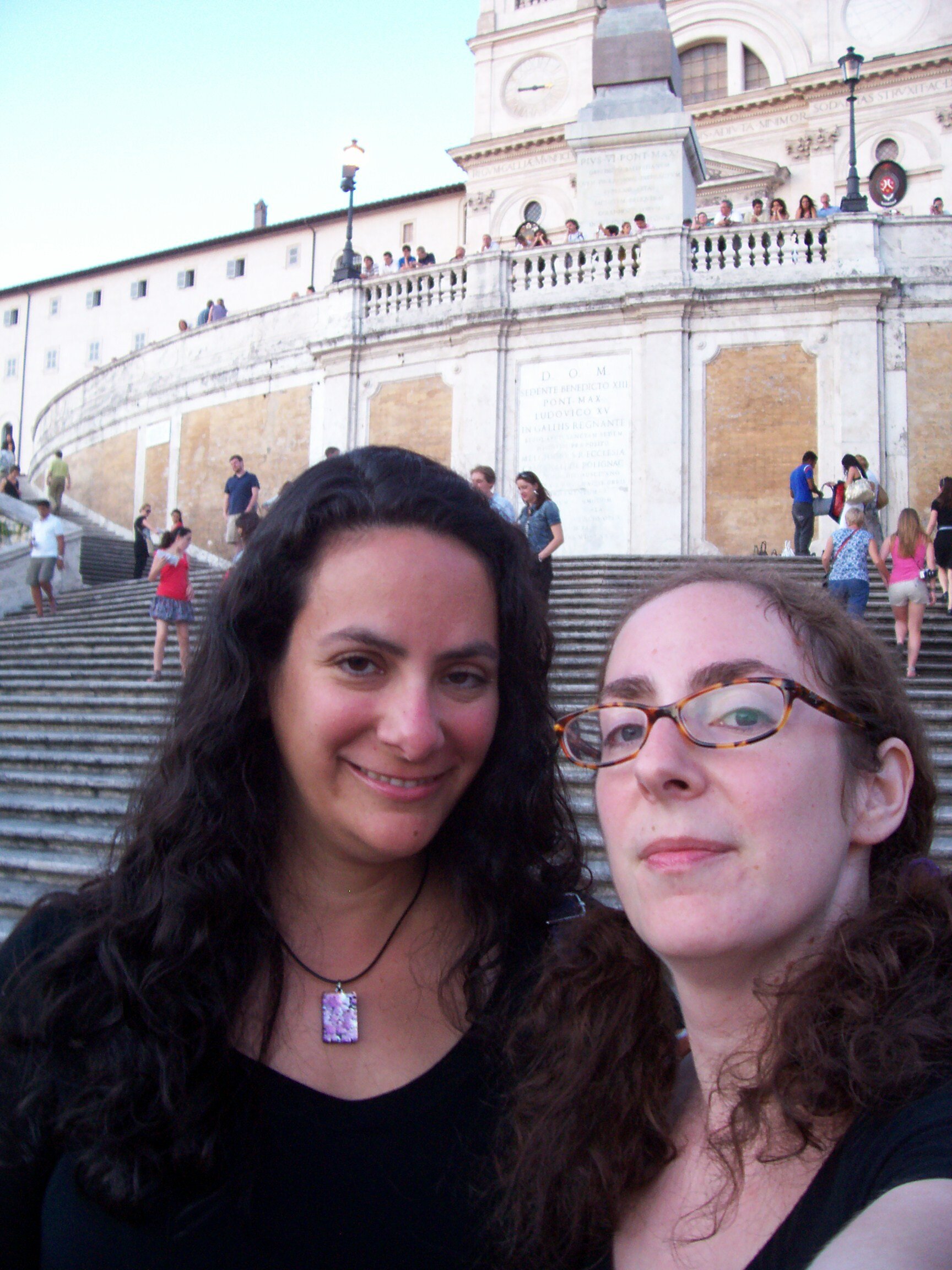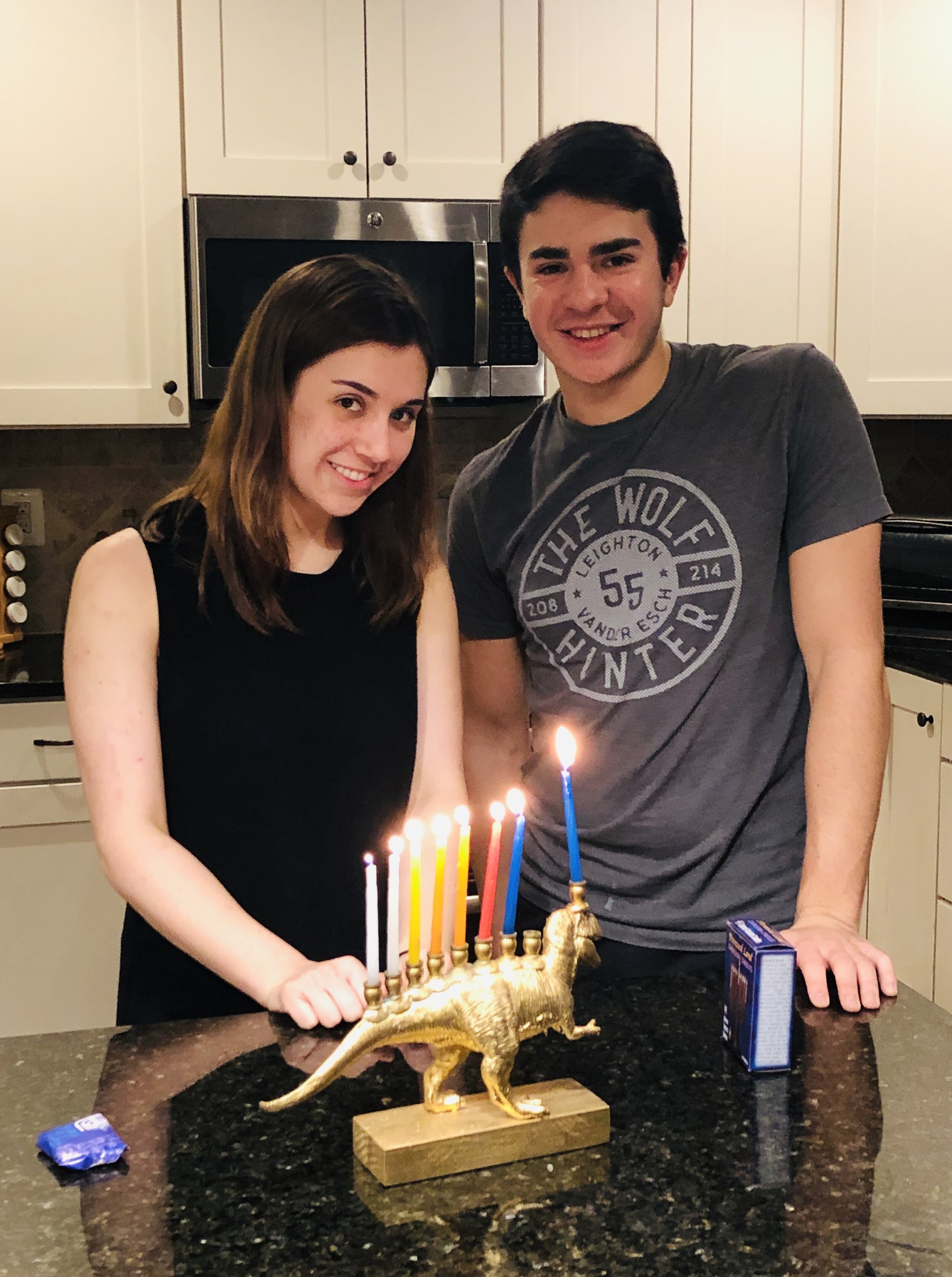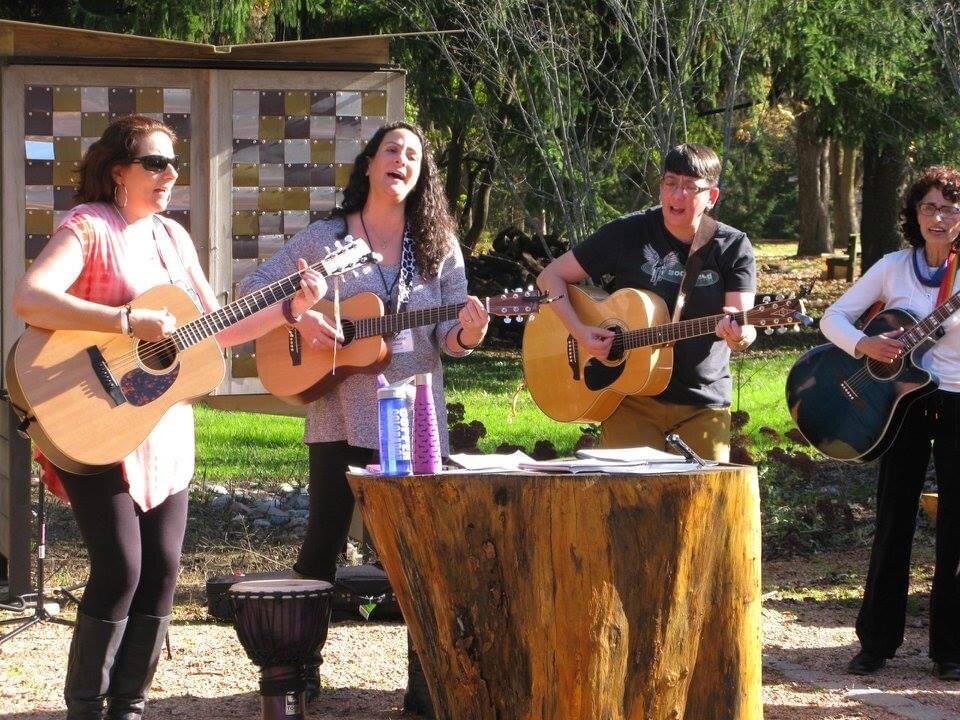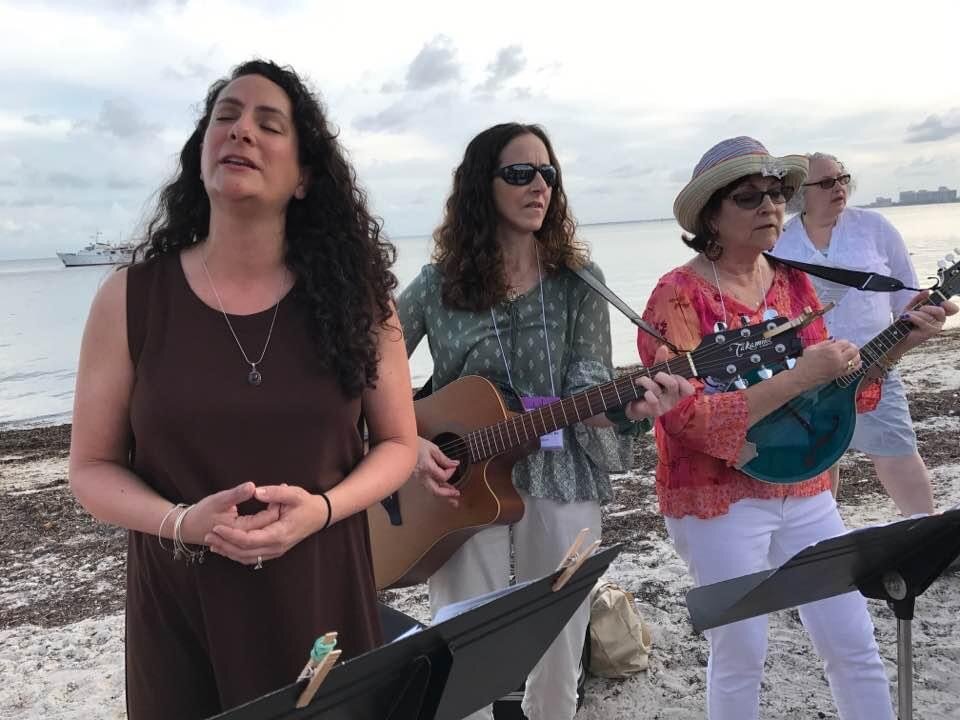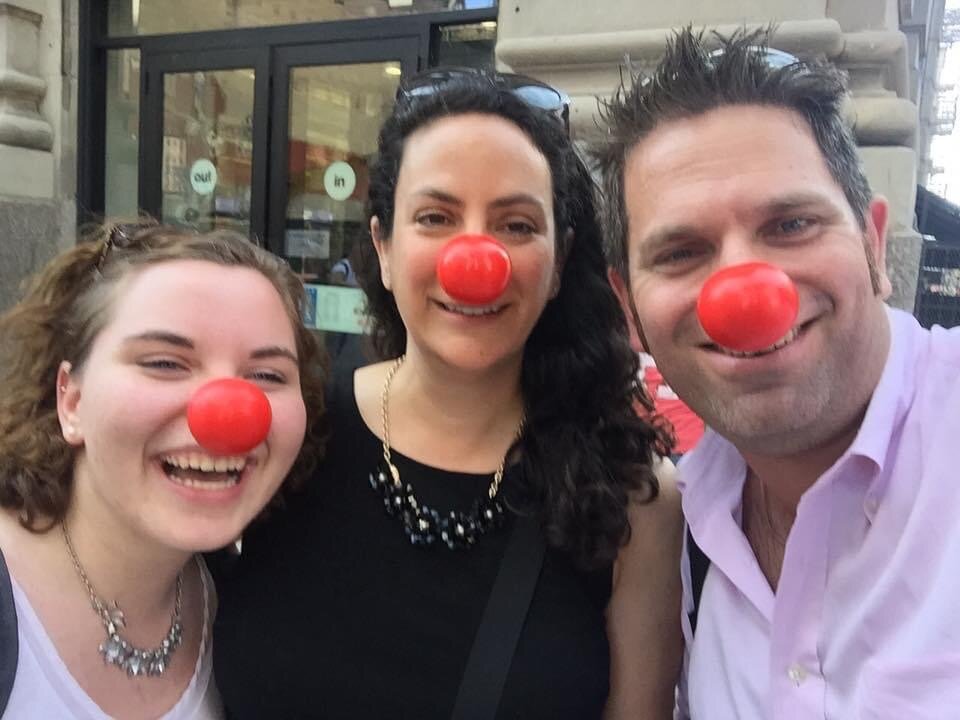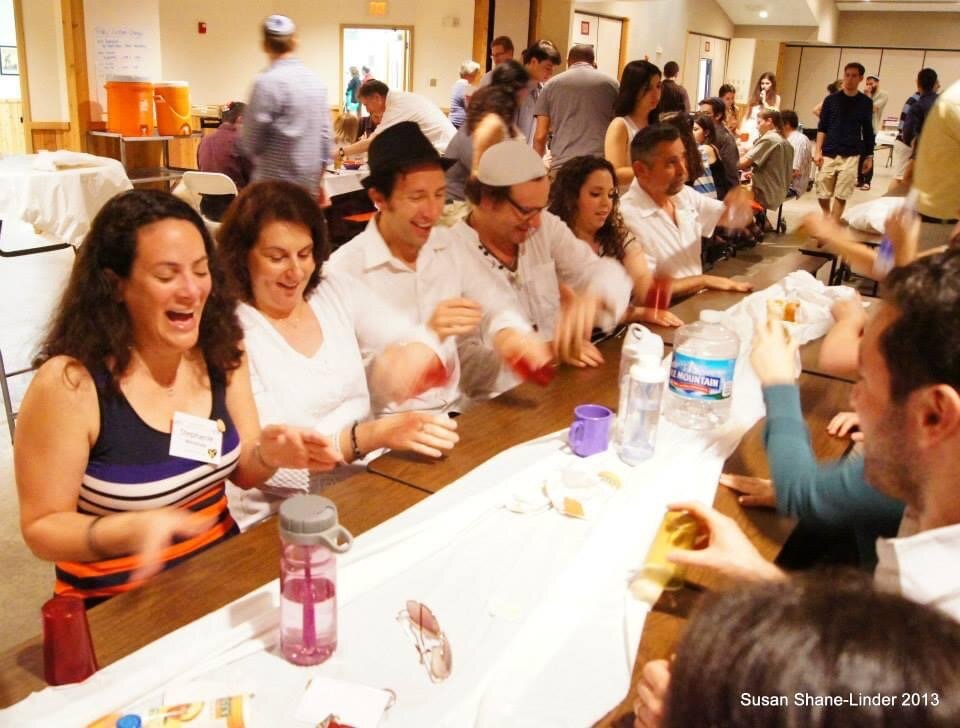Hazzan Stephanie Weishaar
The Winding Journey
Growing up on the north side of Chicago, my family celebrated Jewish holidays and connected with family for the High Holidays, Hanukkah, and Pesah. Yet it wasn’t until I was nine or ten years old and asked my parents why I didn’t go to Hebrew school like the other Jewish kids did that I begin formal study of Judaism.
Attending a small conservative congregation’s religious school several days a week became a highlight for me. I fell in love with the study of Judaics and Hebrew, taking great pride as I wrote each Hebrew letter in my little blue booklets.
Somehow, I began volunteering to help the rabbi lead services as well. I remember delighting in chanting Chatzi Kaddish before the congregation. For a while, I and one of my classmates were referred to as “junior rabbis” and given many opportunities to participate in services. I was delighted by this chance to lead prayers and sing for the congregation. While I had always enjoyed singing – in school chorus, with friends, and with the radio – there was something special about singing at a service.
As I grew older, life took me different places. In high school, I could not break into the choir director’s inner circle so I turned away from singing for at least a decade. In college, I focused on learning Russian and international relations with an eye toward foreign service. A series of internships in government and the nonprofit sector convinced me that NGOs were more nimble and able to effect change. So I finished school and worked for a number of nonprofit organizations developing the emerging charitable sector in Eastern Europe.
In 1993, I had the opportunity to live and work in Dnipropetrovsk, Ukraine, as the Field Director for a Jewish charity. Since the founder and most of his connections were Lubavitch, the job also offered me a window into Chasidic observance. I loved spending Shabbos with my rebbetzin friend and her family. I learned the thinking behind many Jewish traditions. My interest in religion was renewed and I returned home curious to find a way to incorporate Judaism back into my life.
The year after I returned from Ukraine, my husband and I were married by a priest and a rabbi in Chicago. The two men had worked together multiple times and collaborated like a comedy act under the chuppah. Both our families were comforted by the presence of familiar rituals and thoughtful explanations of what might have seemed foreign. Planning the wedding helped us see the similarities and differences in our backgrounds. We honed our ability to compromise and recognize what is important to our families. The seamless combination of our traditions at the wedding encouraged me that compromise would not need to mean sacrifice. I was learning to create my own path to Judaism, different from my parents and my Hebrew school classmates. Moments like our grandfathers alternating the blessing over the challah in English (his) and Hebrew (mine) are sealed in my mind with joy.
During the early years of our marriage, my connection to Judaism mirrored my childhood - family celebrations of holidays and home observance. When my daughter began attending JCC preschool, her enthusiasm for rituals got us lighting candles and enjoying challah on Friday nights. Eventually she and I learned to make our own challah, elevating our Shabbat experience.
When my children were two and four years old, I set out to find a congregation. The first place I visited was a Reform congregation meeting in a nearby church. I had never been to a Reform service and wasn’t sure what to expect. After a few visits, Rabbi Paul Tuchman told me that the Reform movement had become more conservative in practice over my lifetime and I should give it a chance. Since the location was close and the people were nice, I stuck with it. Soon enough, that became our congregational home. My kids enrolled in religious school, I volunteered as a teacher and youth group advisor, and we made friends. I eventually became a board member and ultimately served as president.
Meanwhile, this small congregation had to eliminate the part-time cantor position and rely on members to bring music to services. I had been singing in the choir for a few years and rediscovered my love of, and talent for, music. Rabbi Tuchman sat me down one day and taught me the basics of Erev Shabbat music. As he wrote down each prayer on a yellow legal pad, I wondered how I could learn enough to co-lead services with him. But he encouraged me to give it a try and I grew more confident with practice and experience. With the help of the internet, stacks of CDs, various workshops, and generous mentors; as my repertoire grew, so did my understanding of the service structure. To my amazement, I found a completely new line of work that felt more natural than anything I had done until this time. Ultimately, I created a Music Director position and worked as a cantorial soloist, music teacher, and volunteer coordinator training other soloists at the congregation.
While learning to lead the music at worship services, I increased my understanding of Jewish prayer. This brought me a renewed sense of connection to my heritage as well as newfound spirituality. Studying the texts led me to think about their meaning and how I relate to the stories and philosophies that were mostly tangential in my life. The more I learned, the more I wanted to continue learning. At some point, I read an article in a popular magazine that suggested we were our “true selves” at age 10, so we should try to remember what we wanted to be back then and consider that our authentic calling. After years of working in international development had morphed into primarily nonprofit fundraising – grants can be written from home with a baby on your lap – I realized that I had become tied to work I did not love. When I was a 10-year-old girl, I dreamed of becoming a Cantor. Could I still fulfill that dream?
Fast forward through several years of trying to find a distance-learning option that accommodated a mother of young children and was willing to train clergy in interfaith relationships, a series of workshops and seminars for song leaders and synagogue musicians, four semesters of Hebrew at my alma mater, and lots of learning by doing. The congregation where I grew into a soloist and music teacher ultimately chose to go in a different direction and I moved on to teaching and singing in new places. Leaving the nest was painful yet I am grateful for the support and faith leaders of other congregations gave me as I turned Jewish liturgical music into my new career.
In 2014 I served as a cantor for the High Holy Days at a small, historic congregation in western Maryland. The elation upon being hired for that position was quickly replaced by the intense self-study that consumed my summer as I prepared for the huge role of leading all the music with no choir or accompaniment. Mastering difficult pieces was a thrill, yet so was uncovering the kavanah (intention) of prayers I had said so many times without full understanding. By the time I finished Rosh Hashanah services, I was ecstatic and oozing gratitude via email to dozens of my dear friends and mentors.
I have had the opportunity to lead services for a number of congregations since then, each bringing me fresh experiences and new learning. Since the fall of 2014, my life has been enriched by my work as the Spiritual Leader of Kol Nefesh congregation. This group of young families has given me a practical sandbox for experimentation that is responsible for the leader I am becoming.
In 2016, I started classes in the ALEPH Ordination Program, finally on the road to being a “real cantor.” Twenty-eight semester courses, four summer intensives, and a sprinkle of independent studies later, I am knocking on the door of completion. Of course, now that I have learned what I set out to study, I know there is even more to learn. Still, I will take a break from my lessons and celebrate this milestone of ordination as Hazzan.
Buckets of Gratitude
No one lives five decades without the help of countless others.
I am humbled by the many teachers and mentors who guided me here. Starting with my parents - Gary and Jackye Rubin - who taught me the core of our tradition is to be a mensch. I hear their voices in my head every time I face a moral dilemma and I am grateful for the compass they installed in me.
In my seminary studies, I am shaped by the teacher of my teachers - Reb Zalman Schachter-Shalomi, z”l; my rebbes and teachers – Reb Marcia Prager, Reb Elliot Ginsburg, and Reb Leila Gal-Berner; my spiritual directors – Rabbi Mark Novak and Rabbi Shefa Gold; and my mentor – Hazzan Jack Kessler. My formation is blessed by all the teachers in our program, my classmates who helped me wrestle with our tradition, and my beloved DLTI-9 cohort.
Leaders and members of congregations that nurtured and encouraged me hail from Oseh Shalom in Laurel, MD; B’er Chayim in Cumberland, MD; Beth El in Winchester, VA; Bethesda Jewish Congregation in Bethesda, MD; The Jewish Studio in Rockville, MD; Bet Aviv in Columbia, MD; and Kol Nefesh in Columbia, MD.
And none of this would be possible without the incredible understanding of my partner Bobby and my kids Kate and Ben. You met my unexpected yearning with grace and compassion that means more to me than I can describe.
If you would like to honor my ordination with a donation to ALEPH,
I invite you to visit this page.
Please add your blessings and comments below!
(Note: you will not be able to “like” or respond to other people’s comments if you are using Chrome or Safari.)






